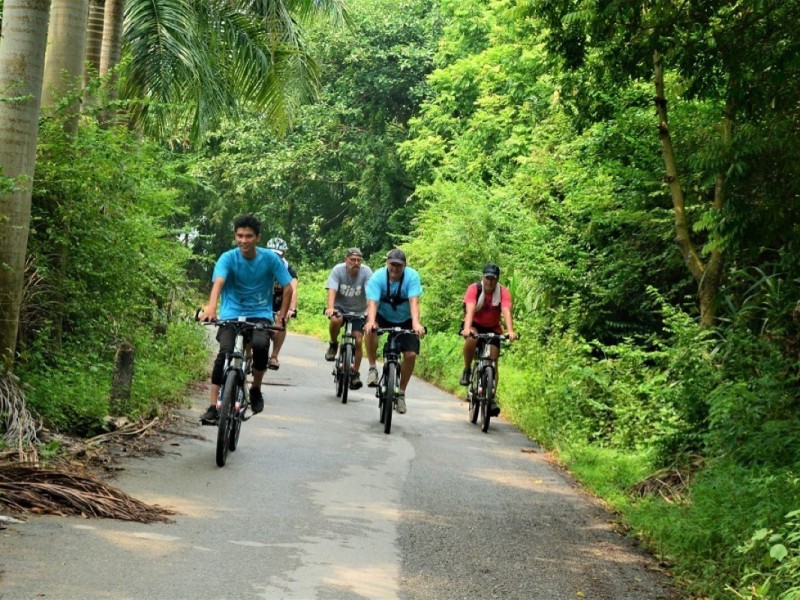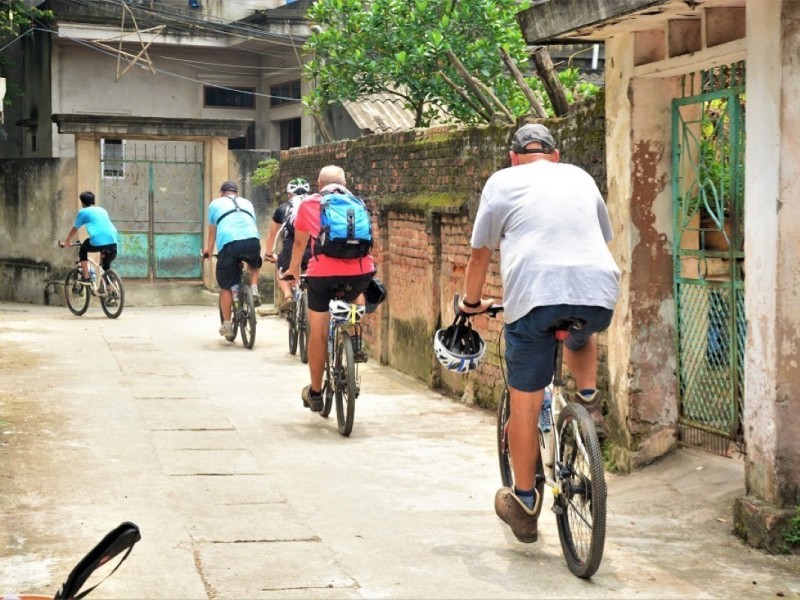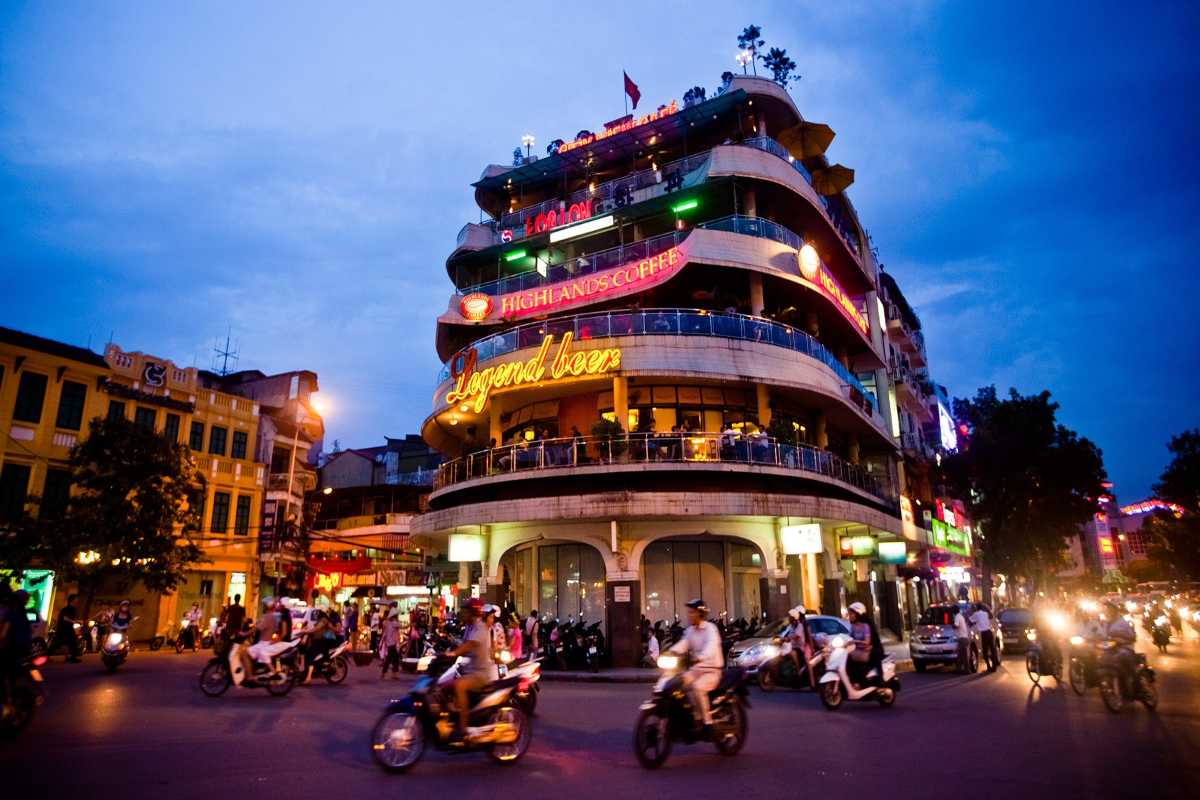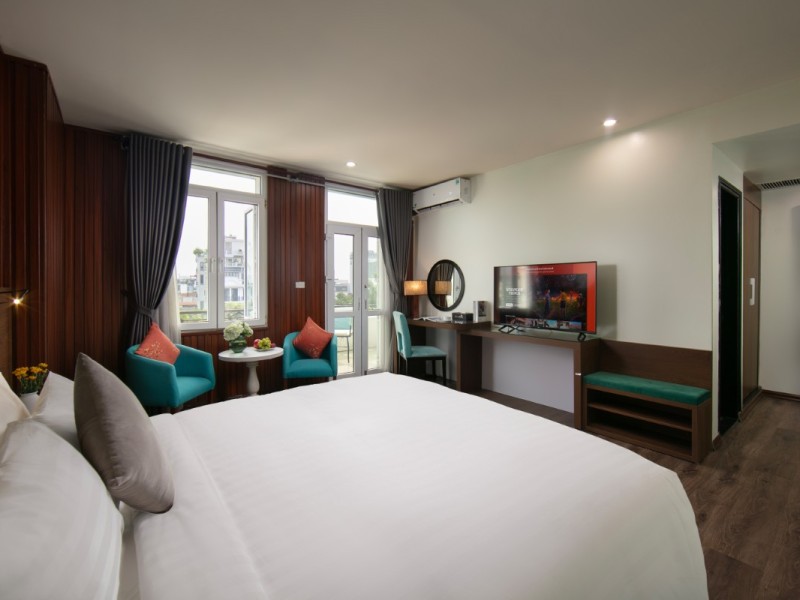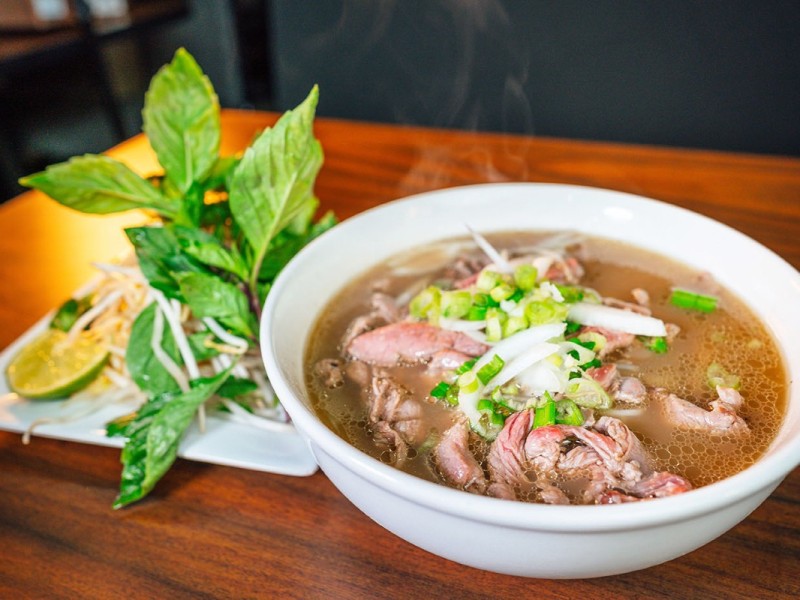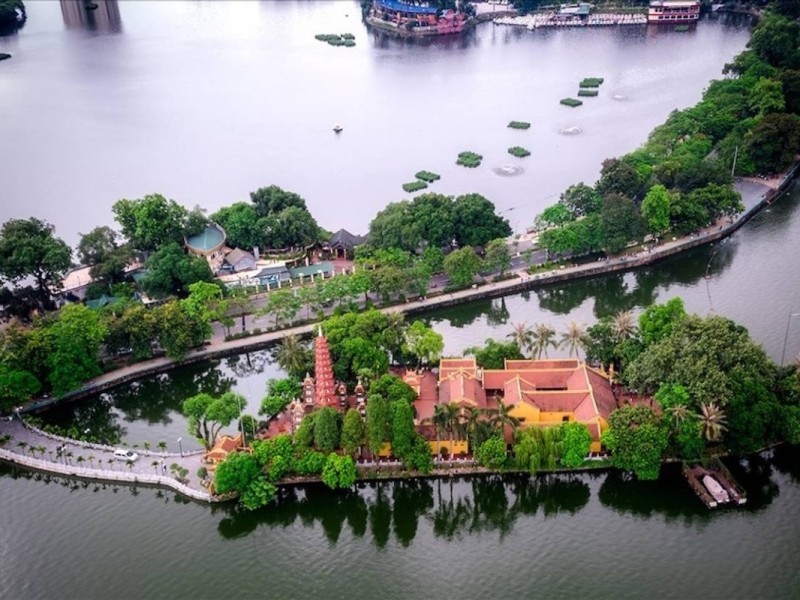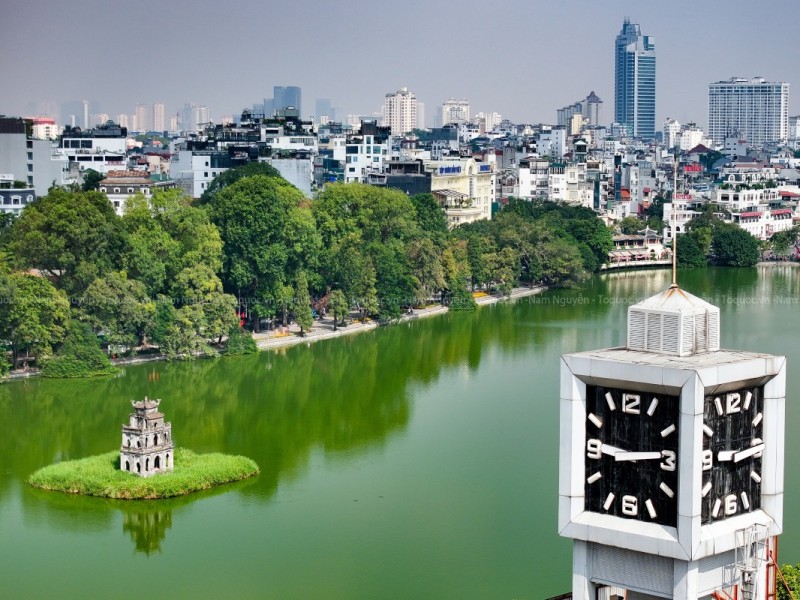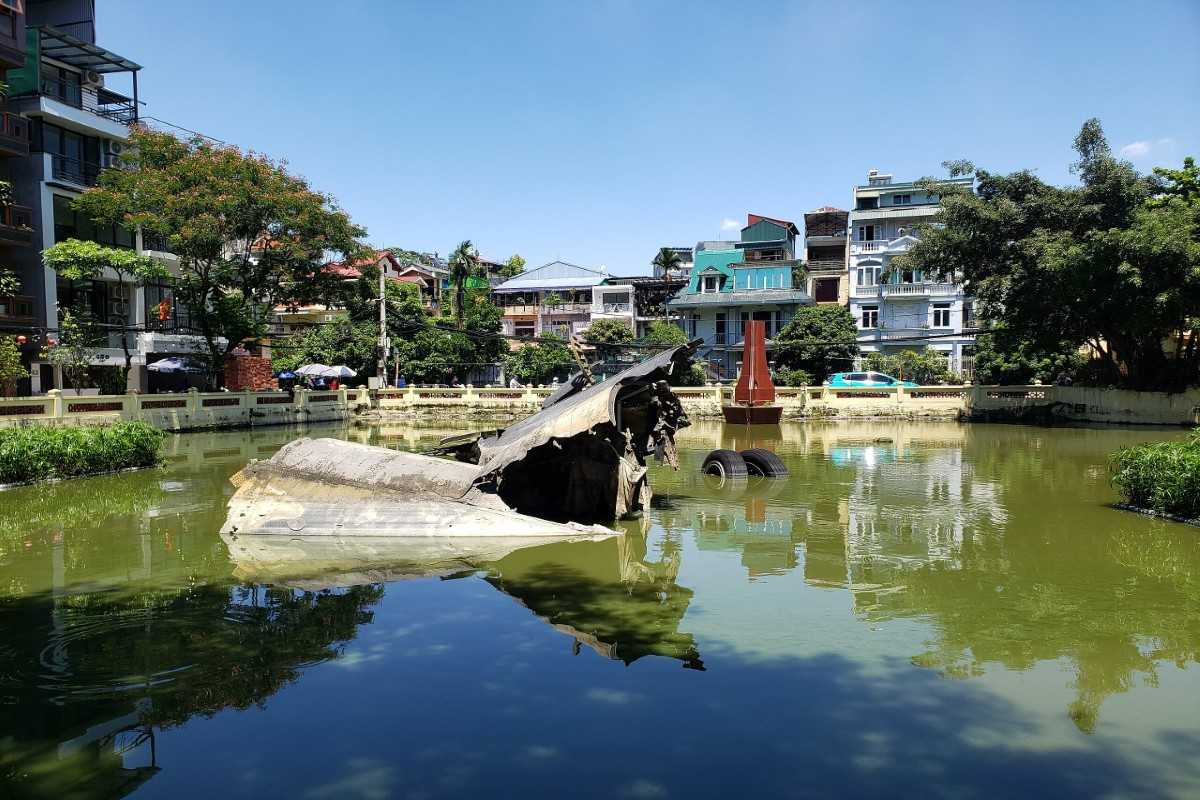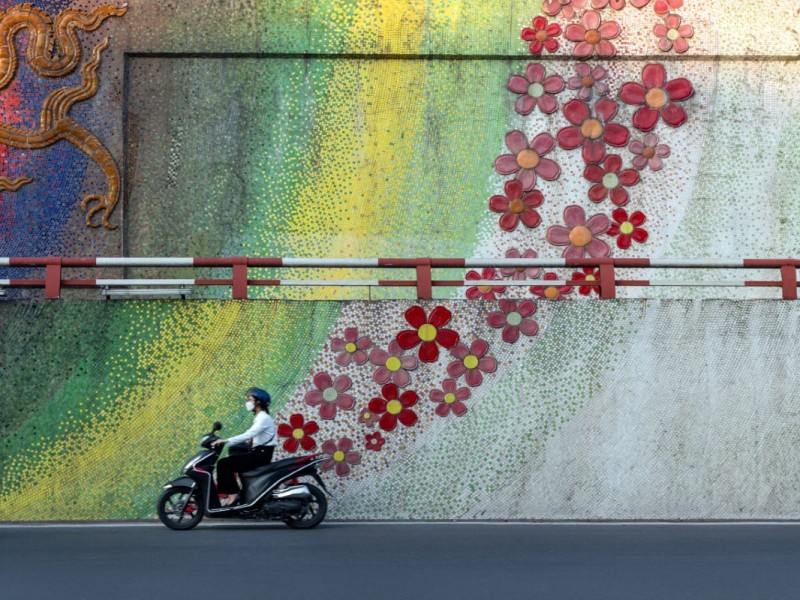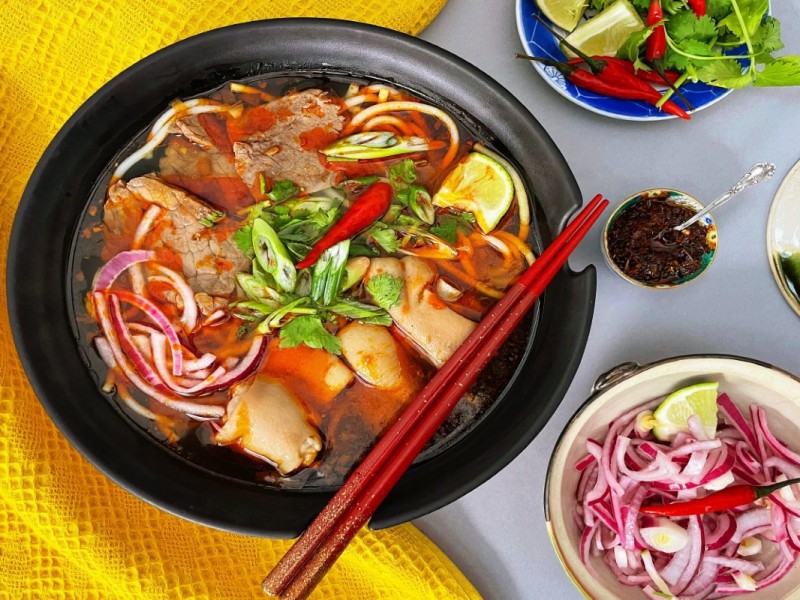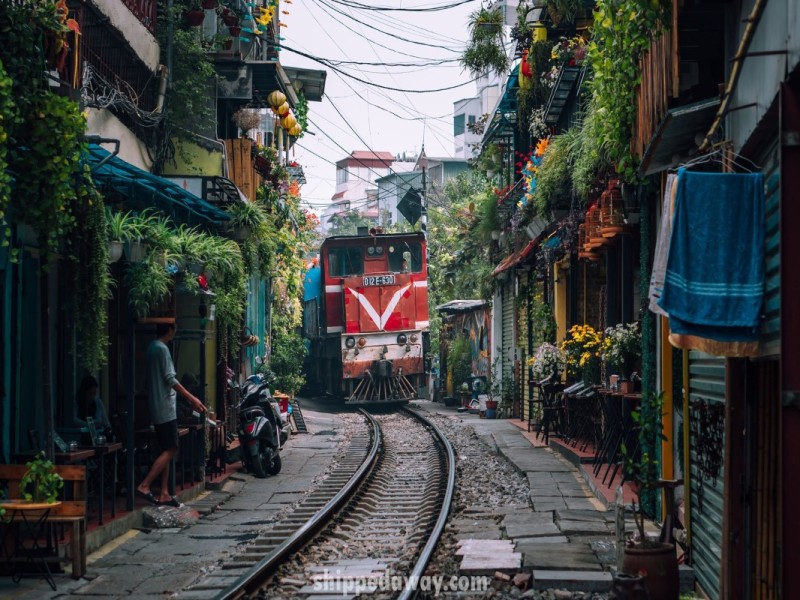Noi Bai International Airport Complete Travel Guide & Visitor Tips
Noi Bai International Airport serves as Hanoi’s primary international gateway, offering modern terminals, efficient immigration, and a growing range of airlines. It features convenient transport links, comfortable lounges, and authentic Vietnamese dining options, making it a well-equipped hub for travelers visiting northern Vietnam.
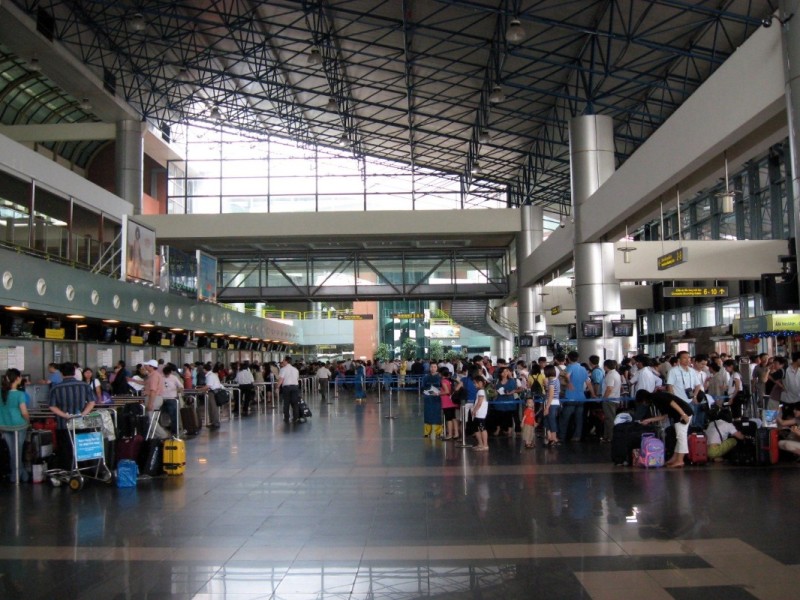
Getting to Know Noi Bai International Airport
Noi Bai International Airport stands as a vital gateway connecting northern Vietnam to the world. Located just north of Hanoi, it serves millions of passengers annually, reflecting Vietnam’s rapid growth and expanding travel demand. As the largest airport in northern Vietnam, it offers a blend of modern facilities and efficient operations that make it a cornerstone for both domestic and international travelers. Whether you are arriving or departing, understanding the airport’s structure and significance will set clear expectations for your journey ahead.
The airport is divided primarily into two terminals: Terminal 1 handles domestic flights and is home to several key airlines, including Vietnam Airlines, while Terminal 2 caters to international flights. Terminal 2, a remarkable architectural achievement, boasts a spacious design and advanced facilities that reflect Vietnam's commitment to modernizing its infrastructure. Its growing capacity and quality service standards have earned it regional recognition and positioned it as a major hub in Southeast Asia. Navigating the terminals is straightforward, with clear signage and helpful staff ready to assist travelers.
Travelers can expect a range of amenities throughout the airport, from comfortable lounges and dining options featuring authentic Vietnamese cuisine to duty-free shops offering local products and international brands. Understanding these features early can help you make the most of your time, whether in transit or preparing for your flight. Familiarizing yourself with the layout, especially how to navigate Terminal 2 at Noi Bai Airport or finding your way through Terminal 1’s key airlines, will enhance your overall travel experience.
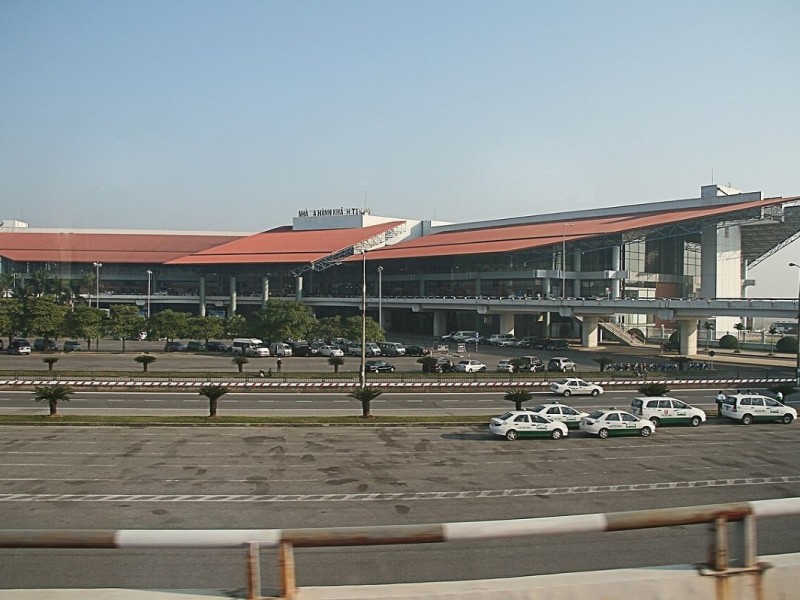
A Brief History and What Makes It Special
The story of Noi Bai International Airport reflects Vietnam’s economic transformation and increased global connectivity. Originally established decades ago as a modest airfield, it has evolved into a modern aviation hub through significant expansions and renovations. The opening of Terminal 2 marked a milestone, introducing state-of-the-art technology and design that elevated the airport’s capacity and passenger comfort. This terminal is notable not only for its functionality but also for its architectural beauty, blending contemporary aesthetics with cultural elements unique to Vietnam.
Over the years, the airport has continuously expanded its network of destinations and airlines, facilitating travel across Asia and beyond. Its growth aligns with the broader trend of Vietnam airport expansion, symbolizing the country’s ambition to become a central player in regional air travel. Recognition through awards and increasing passenger volumes showcase Noi Bai International Airport as more than just a transit point — it’s a welcoming space that reflects Vietnamese hospitality and progress.
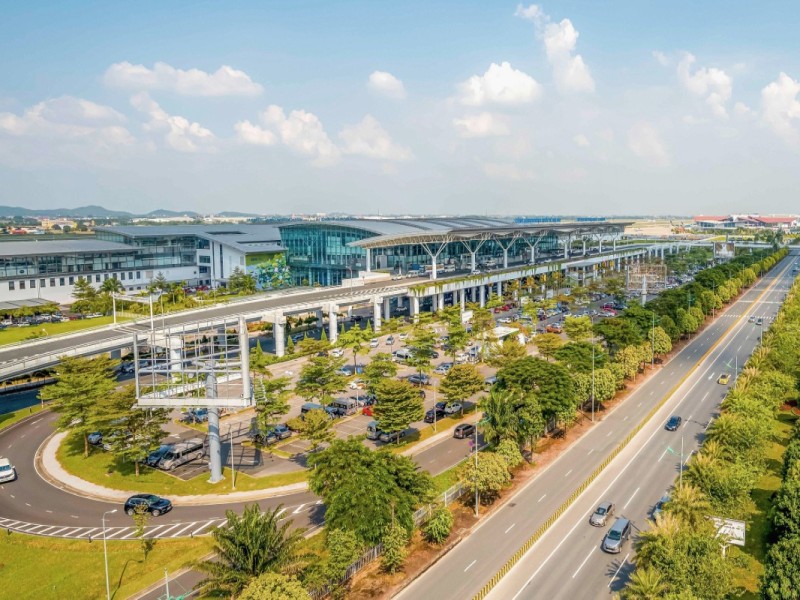
What to Expect When You Arrive
Upon arriving at Noi Bai International Airport, you will step into a busy yet organized environment designed to handle high passenger volumes smoothly. After disembarkation, clear and multilingual signage guides you toward immigration and baggage claim areas. The airport atmosphere combines efficiency with cultural touches, offering a glimpse of Vietnam even before you leave the terminal.
Be prepared for immigration procedures, which may involve queues depending on flight schedules and passenger volumes. Travelers often ask about immigration at Noi Bai, and while lines can be busy during peak times, the process is generally straightforward with attentive staff. After clearing immigration, proceed to the baggage claim area where signs clearly indicate the correct carousel for your flight. Knowing what to expect during baggage claim Noi Bai helps reduce stress and speeds up your exit.
Customs inspections are routine, with staff checking for declarations and ensuring compliance with Vietnam’s regulations. Being informed about the airport arrival process Hanoi and customs at Noi Bai will help you move through the final stages without unnecessary delays. Overall, arriving at Noi Bai International Airport is a welcoming experience, and having a sense of the process will set you on the right path for your adventure in Vietnam.
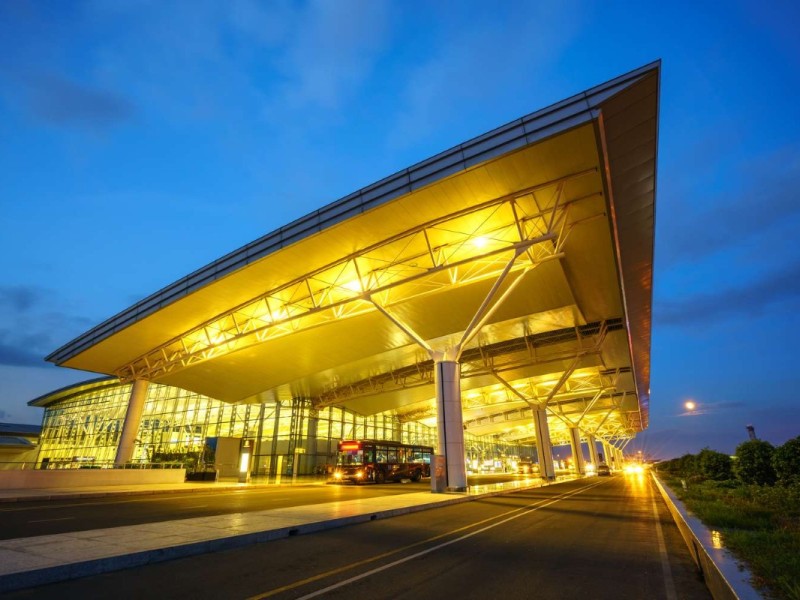
The Layout of the Airport: Terminals and Facilities
Understanding the layout of Noi Bai International Airport is essential for a smooth travel experience. The airport consists of two main terminals, each serving distinct flight types. Terminal 1 is dedicated to domestic flights, accommodating several key airlines, including Vietnam Airlines. It features convenient check-in counters and security checkpoints, making the process efficient for travelers flying within Vietnam. On the other hand, Terminal 2 handles international flights with a larger scale and more comprehensive facilities. This terminal includes immigration halls, customs checkpoints, baggage claim areas, comfortable lounges, and duty-free shops. Transferring between terminals is straightforward, supported by clear signage and shuttle services. Many travelers find it helpful to refer to a visual airport map to navigate these zones effectively. Familiarity with the terminals can help you plan your transfers and locate services quickly.
Plan your journey by understanding the distinctions between terminals to ensure a stress-free transit at Noi Bai International Airport.
Overview of Terminal 1 (Domestic)
For travelers on domestic routes, Terminal 1 at Noi Bai International Airport serves as the hub for local flights. Major airlines like Vietnam Airlines operate from here, providing extensive coverage across the country. The terminal includes well-organized check-in counters and security checkpoints designed to streamline the boarding process. Amenities such as food stalls, comfortable seating areas, and clean restrooms are readily available to ensure a pleasant wait before your flight. Knowing what to expect at Terminal 1 allows domestic travelers to prepare efficiently and make the most of their time at the airport.
Ensure your domestic travel is smooth by familiarizing yourself with the facilities at Terminal 1.
Overview of Terminal 2 (International)
Terminal 2 is the international gateway at Noi Bai International Airport, serving a wide range of global destinations. This terminal houses immigration and customs halls designed for efficient processing of international passengers. After passing through immigration, you will find baggage claim areas equipped with clear signage. Travelers can enjoy access to airport lounges, including airline-specific and third-party options, perfect for relaxing before flights. Duty-free shops offering a variety of local and international products add to the terminal’s appeal. Understanding the layout and services of Terminal 2 helps international visitors navigate arrivals and departures with ease.
Prepare for your international journey by getting to know the key areas of Terminal 2.
Key Amenities and Services You Should Know
Throughout Noi Bai International Airport, travelers can access essential amenities to enhance comfort and convenience. Information desks are strategically placed for assistance. Currency exchange counters offer fair rates, and ATMs are widely available for easy cash withdrawals. Charging stations for mobile devices are located in multiple areas, ensuring your gadgets stay powered. Clean and accessible restrooms are abundant, and medical aid stations provide support for emergencies or health concerns. Familiarity with these services reduces travel stress and ensures you have everything you need within reach during your airport experience.
Make your visit more comfortable by locating these vital services at Noi Bai International Airport.

Pre-Trip Essentials: Before You Land at Noi Bai
Preparing for your arrival at Noi Bai International Airport involves understanding key pre-trip essentials like visa rules, customs regulations, and connectivity options. These details can make the difference between a smooth entry and frustrating delays. Whether you’re applying for a Vietnam e-visa, planning to get a visa on arrival, or figuring out how to stay connected right away, having clear and reliable information before you travel sets you up for success. Being well-prepared helps you breeze through immigration, comply with customs, and get online quickly, making your first moments in Vietnam stress-free.
Take time to familiarize yourself with the visa requirements, customs restrictions, and available SIM card options at Noi Bai International Airport to ensure a seamless start to your trip.
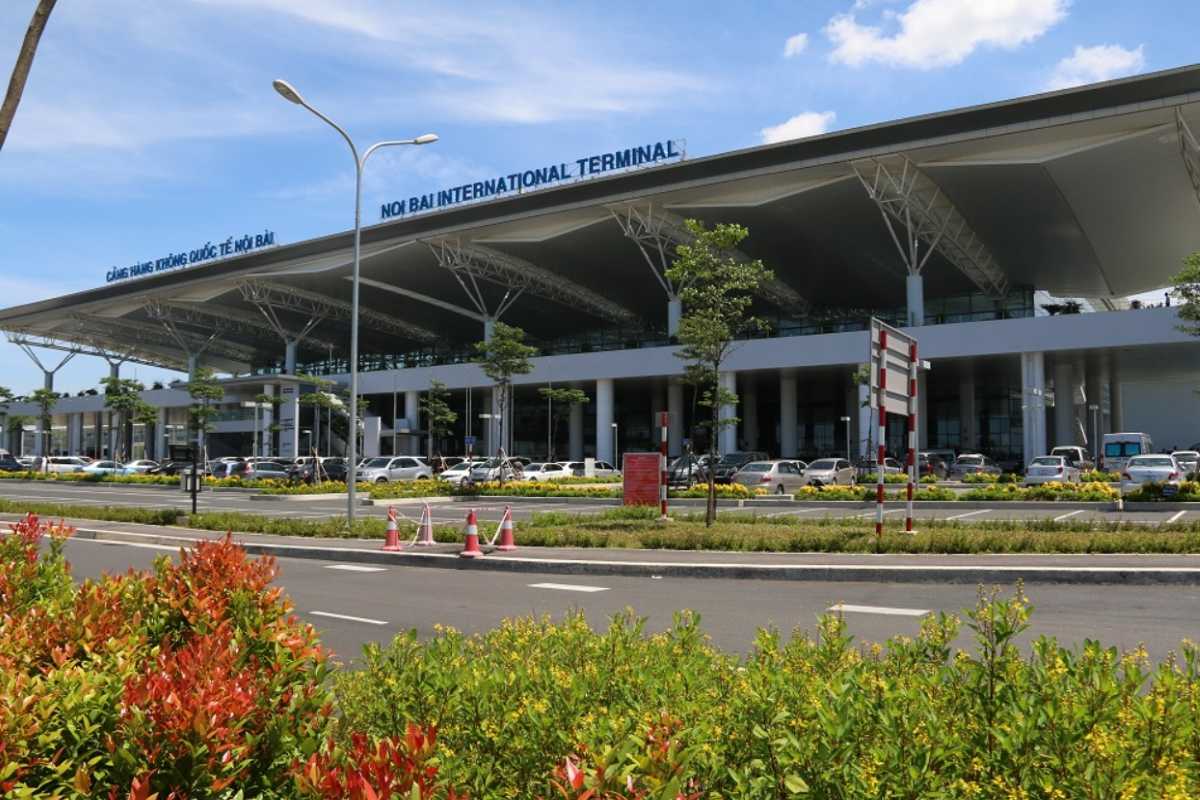
Visa & Entry Requirements for Vietnam
Entering Vietnam through Noi Bai International Airport requires travelers to meet specific visa and entry rules. The Vietnam e-visa process allows citizens of many countries to apply online, simplifying arrival formalities. Alternatively, some travelers qualify for visa on arrival, which needs a pre-approval letter arranged before flying. Additionally, several countries benefit from visa exemptions, allowing their citizens to enter Vietnam without a visa for limited periods. Since visa policies can change, it’s crucial to check official government websites or trusted sources close to your travel date to avoid surprises. Understanding these requirements thoroughly ensures your entry at Noi Bai International Airport is smooth and efficient.
Plan ahead by verifying your visa status to avoid complications on arrival at Noi Bai International Airport.
Liam's E-Visa Odyssey: A Step-by-Step Account
The tropical humidity of Southeast Asia already felt like a warm embrace, even through my laptop screen. My bags were practically packed, my Hanoi itinerary sketched out, but there was one crucial, digital hurdle standing between me and the fragrant pho of Vietnam: the E-Visa. I’d heard tales – both smooth and slightly maddening – about online visa applications, and as someone who values seamless travel, I was determined to make my Vietnam E-Visa journey a triumph of preparedness.
My journey began, as most modern adventures do, with a search engine. "Vietnam E-Visa official site." The first click brought me to what looked like the legitimate portal. The page, a functional but not particularly flashy interface, immediately emphasized clarity: "Apply for e-Visa," "Check e-Visa status." This was it. A slight tremor of excitement (and a touch of pre-travel jitters) went through me. This wasn't just a form; it was my golden ticket.
The initial steps were straightforward: selecting my passport type, nationality, and port of entry. I painstakingly reviewed each dropdown, double-checking against my flight details to ensure I wasn't accidentally choosing an obscure border crossing when I meant Noi Bai International. It felt like I was already navigating Vietnam's meticulousness, even from my living room chair.
Then came the true test: the photo upload. "White background, no glasses, clearly visible face, correct aspect ratio." My phone was already overflowing with travel pics, but a professional passport photo? Not so much. I spent a good twenty minutes, propped against a blank wall, taking countless selfies, trying to hit that sweet spot of 'official yet not terrifying.' The system was surprisingly picky, rejecting my first three attempts for shadows or a slight tilt of the head. I could practically hear it tutting at me. Frustration bubbled slightly, but the thought of Vietnamese coffee spurred me on. Finally, after one last squint-and-click, it was accepted. A small, silent cheer escaped me. This was the first hurdle conquered, and it felt like a mini-victory.
Next up, the personal details. Every field demanded my full attention. Passport number, date of issue, expiry – I typed slowly, my fingers heavy with the weight of accuracy, then re-read each entry twice, sometimes three times. A single typo here, I knew, could derail the entire trip. This wasn’t like filling out a quick online survey; this was my entry into a new country. My gaze lingered on the "Address in Vietnam" field. I meticulously copied my first hotel's address, already imagining myself stepping out onto a bustling Hanoi street.
The payment gateway was next. US$25. Fair enough for the convenience. I entered my card details, the screen briefly flashing "Processing," and then, a confirmation! An email landed in my inbox almost instantly, providing my registration code. "Keep this code," it urged. You bet I would. I immediately took a screenshot, copied the code into my notes app, and sent it to myself in a separate email. Overkill? Maybe. But for international travel, there's no such thing as too much redundancy.
The waiting game began. The website stated 3 working days. I tried to be patient, focusing on other aspects of my trip planning, but I found myself checking my email inbox with an almost neurotic frequency. Each new email notification gave me a jolt of anticipation. Was this it? Was it my visa?
On the morning of the third day, a notification popped up. "Vietnam E-Visa Granted." My heart literally skipped a beat. The screen opened to a crisp, clean PDF. My photo, my details, the valid dates, the QR code – all perfectly in place. A wave of profound relief washed over me, quickly followed by pure, unadulterated excitement. It was real. It was tangible. I printed two copies – one for my passport, one for my carry-on – and saved a digital copy to my phone and cloud storage. The paper felt substantial in my hand, a testament to a successfully navigated bureaucratic maze.
My Takeaways from This Digital Journey:
- Patience and Precision are Key: Don't rush. Double-check every single character, especially passport numbers and dates. A tiny error can lead to big headaches.
- Photo Specifications are Serious: Get your photo right. A plain white background and good lighting are essential. Don't be afraid to retake it multiple times.
- Keep Your Registration Code Safe: This is your lifeline to checking status and retrieving your visa. Screenshot it, email it to yourself, write it down.
- Print Multiple Copies: Digital is great, but a physical backup (or two!) is invaluable for immigration officers.
- Don't Overthink It, But Be Thorough: While the process demands accuracy, it's generally straightforward. The "fear of the unknown" is often worse than the reality.
My E-Visa odyssey, though confined to the digital realm, felt like the first successful leg of my Vietnamese adventure. It instilled a sense of preparedness and confidence that I’d tackled the groundwork, and now, the vibrant streets of Hanoi truly awaited. If I could conquer the E-Visa, I could conquer anything Vietnam threw my way – happily, with an approved document in hand.

Customs Regulations: What You Can and Cannot Bring
Understanding the customs regulations Noi Bai Airport is essential to avoid delays and fines when entering Vietnam. Certain items like alcohol and tobacco are subject to strict limits, and carrying amounts beyond these can lead to confiscation or penalties. Currency restrictions also apply, with travelers required to declare amounts exceeding specified thresholds. Additionally, some medications need proper documentation or declaration to be allowed through customs. Being aware of prohibited items and following declaration procedures carefully ensures a smooth clearance process at Noi Bai International Airport. Clear preparation and compliance make your entry into Vietnam hassle-free.
Familiarize yourself with customs rules to navigate Noi Bai Airport smoothly and confidently.
Sarah's Smooth Customs Passage: Avoiding Unnecessary Delays
The cabin lights flickered on, a gentle nudge from the flight attendant announcing our descent into Noi Bai. My stomach fluttered, a mix of excitement for Hanoi's bustling streets and the familiar whisper of pre-customs anxiety. Vietnam, like any country, has its specific rules on what you can and cannot bring in, and after hearing a few traveler tales of unexpected delays, I was determined my entry would be as smooth as silk, mirroring the flow of the Red River.
My preparation began weeks before. I'd already scoured the official Vietnam Customs website, noting the specific customs regulations Noi Bai Airport. The key takeaways were clear: limits on alcohol and tobacco, strict rules on certain medications, and an emphasis on declaring anything over the specified currency limit. My personal items were standard, but I did have a small, prescribed medication with me, so I made sure to carry a copy of my prescription and keep it in its original packaging. No exotic spices or suspicious electronics for me; just a traveler eager to explore.
As the plane touched down with a gentle bump, the scent of jet fuel mixed with something subtly earthy – perhaps the prelude to Hanoi’s fragrant air. Stepping into the terminal, the sheer volume of travelers was immediately apparent. A hum of a dozen languages filled the air, punctuated by the rolling of luggage. Signs pointed towards "Immigration" and "Customs," clear enough, but my eyes darted around, looking for any specific declaration points.
I sailed through immigration, thanks to my pre-approved E-Visa (a story for another time, but equally smooth!). My bag, surprisingly, was one of the first off the carousel. With my small backpack and checked luggage in tow, I approached the customs area. Unlike some airports where you actively seek out a declaration counter, at Noi Bai, after immigration and baggage claim, you effectively pass through customs. There's usually a "Nothing to Declare" lane and a "Goods to Declare" lane.
Knowing I had nothing to declare beyond my personal effects (and my properly documented medication), I headed confidently towards the "Nothing to Declare" lane. I held my passport and boarding pass openly, ready for inspection, but also relaxed. I kept an eye on others, noticing a few travelers being gently redirected to the "Goods to Declare" lane, likely for larger items or those carrying higher quantities of alcohol. It felt like the customs officers, though stoic and efficient, were subtly scanning for cues. My preparation gave me an air of calm confidence, which I believe is always a good thing when passing through official checkpoints.
As I approached the customs officer, I offered a polite nod. He gave me a quick, professional glance, then looked at my passport, and waved me through with a simple gesture. No questions, no bag checks, no hesitation. The barrier lifted, and just like that, I was through. The entire customs process had taken mere seconds, a stark contrast to the vivid, exaggerated stories I’d sometimes heard.
Stepping into the arrivals hall, a blast of cooler, air-conditioned air hit me, mixed with the faint, delicious aroma of something fried – street food, already calling to me! The relief was palpable, but it wasn't just luck. It was the satisfaction of knowing my proactive research on prohibited items Vietnam customs had truly paid off. No awkward conversations, no delays, no fines. Just a seamless transition from plane to pavement, ready to embark on my Hanoi adventure.
Sarah's Speedy Customs Tips for Noi Bai:
- Do Your Homework: Before you even pack, check the official Vietnam Customs website for the latest regulations on what you can and cannot bring. This is paramount!
- Medication? Document It: If you carry prescription medication, keep it in its original packaging and bring a copy of your prescription from your doctor. Even better, have a digital copy accessible on your phone.
- Mind the Limits: Pay close attention to limits on alcohol, tobacco, and currency. If you exceed them, be honest and prepared to declare.
- "Nothing to Declare" Confidence: If you genuinely have nothing to declare, walk through the "Nothing to Declare" lane with confidence. Don't look nervous; you've got nothing to hide!
- Be Ready, Not Worried: Have your passport and arrival documents ready. While I wasn't asked, being prepared to answer questions or show documentation quickly can make a difference.
My smooth Noi Bai customs passage proved that a little bit of preparation goes a very long way. It allowed me to step out into the Hanoi sunshine feeling completely relaxed and excited, without any lingering bureaucratic worries – the perfect start to a memorable trip.
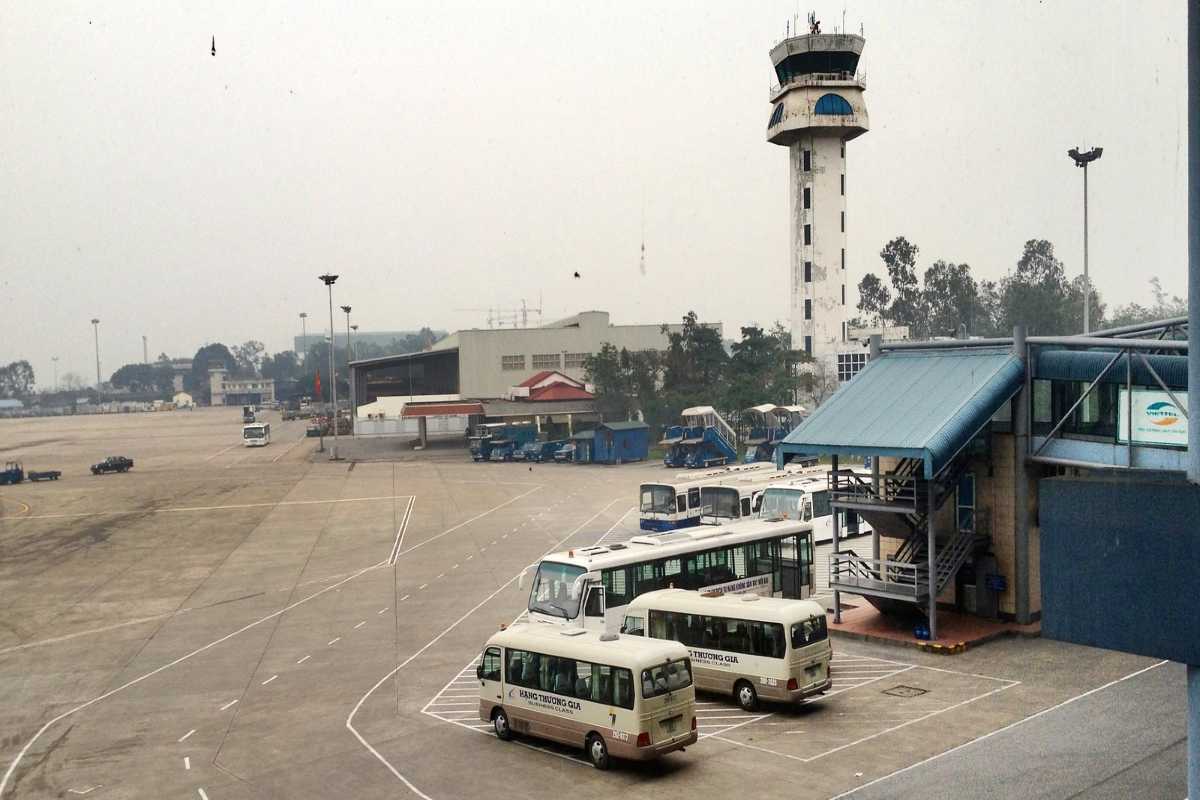
Staying Connected: SIM Cards & Wi-Fi at Noi Bai
Upon arriving at Noi Bai International Airport, staying connected is easy and convenient. You can purchase local SIM cards from providers like Viettel, Mobifone, and Vinaphone at designated counters within the terminals. These providers offer various data plans suitable for short stays or extended trips, ensuring you have reliable internet access right from the start. Additionally, the airport offers free Wi-Fi to travelers, though registration may be required through a simple online process. Understanding where to buy SIM cards and how to connect to the free Wi-Fi helps you navigate, communicate, and stay updated immediately after landing.
Make sure to set up your connectivity as soon as you arrive at Noi Bai International Airport for a smooth and connected travel experience.
Chloe's Instant Connection: Getting Online the Moment She Landed
That familiar jolt of excitement, laced with a touch of disorientation, hits me every time a plane touches down in a new country. Hanoi was no different. As the wheels of our Vietnam Airlines flight kissed the tarmac at Noi Bai, my first thought, even before mentally mapping my route to the baggage claim, was: connectivity. In today’s travel landscape, being instantly online isn’t just a luxury; it’s a vital lifeline for navigation, ride-hailing, contacting loved ones, and sharing those first, exhilarating moments.
My pre-trip research on SIM cards at Noi Bai Airport had paid off. I knew the drill: avoid the first few kiosks right outside immigration, as they often have less competitive rates. Instead, make a beeline for the official telecom provider booths usually found in the main arrivals hall, past customs. As I walked, the air already felt thick with Vietnam's humid embrace, carrying faint whispers of Vietnamese chatter and the distant rumble of baggage carousels.
Sure enough, after gliding through immigration and grabbing my backpack, I spotted them: the bright, inviting storefronts of Viettel, Mobifone, and Vinaphone, practically side-by-side. Each had vibrant signage, showcasing various data plans. The energy was buzzing, a mix of arriving travelers and eager sales staff. I opted for Viettel, having read good reviews about their coverage in Vietnam, especially outside major cities.
Approaching the counter, I was greeted by a friendly face, bright-eyed and efficient. "Xin chào! SIM card?" he asked with a warm smile, gesturing to a pamphlet of plans. The small booth hummed with a quiet efficiency – a stark contrast to the lively main hall. I pointed to the unlimited data plan, my eyes widening slightly at how affordable it was. For less than $10 USD, I could have unfettered internet access for my entire two-week trip. It felt like a steal.
The process was unbelievably quick. I handed over my passport, and he deftly copied the details. Within minutes, my old SIM was out, the new Viettel card was in, and with a few rapid taps on my phone, he had it activated and ready to go. The distinct ding of my phone connecting to data, followed by a rush of notifications from WhatsApp and Instagram, was pure bliss. It was an instant connection, exactly as I'd hoped.
"You are good to go!" he chirped, handing back my passport and a tiny receipt. The whole transaction, from picking a plan to being fully online, took maybe five minutes. Five glorious minutes that transformed my arrival experience from potentially stressful to utterly seamless. I could feel the immediate relief wash over me – no fumbling for directions, no desperate search for free Wi-Fi Noi Bai Airport (though it is available, I prefer my own reliable data), just instant access to everything I needed.
My first act? A quick video call to my family, showing them the bustling arrivals hall, the joy evident in my voice. Then, a quick Grab app check to confirm ride prices to my hotel. No more guessing games or relying on sporadic Wi-Fi signals. This immediate connectivity meant I could confidently navigate the next steps of my journey, feeling truly prepared and independent.
Chloe's Top Tips for Instant Connectivity at Noi Bai:
- Research Providers: Before you land, quickly look up the main telecom providers in Vietnam (Viettel, Mobifone, Vinaphone) and choose one based on reviews for coverage and data plan options.
- Locate the Official Booths: Don't buy from the first kiosk you see. Walk into the main arrivals hall past baggage claim and look for the official, branded stores. They're usually clearly marked and offer the best rates.
- Have Your Passport Ready: You'll need it for registration. It's a quick process, but essential.
- Know Your Data Needs: Decide if you need unlimited data or a smaller plan. For most travelers, unlimited for a few weeks is surprisingly affordable and offers peace of mind.
- Test Immediately: Ask the staff to help you confirm your data is working before you leave the counter. Send a text, make a quick call, or load a webpage.
- Keep Your Old SIM Safe: Don't lose your original SIM card! Store it securely in your wallet or a dedicated SIM card holder.
Getting online the moment I landed at Noi Bai International Airport wasn't just about convenience; it was about empowerment. It set the tone for a confident and connected adventure in Vietnam, allowing me to fully immerse myself from the very first minute.
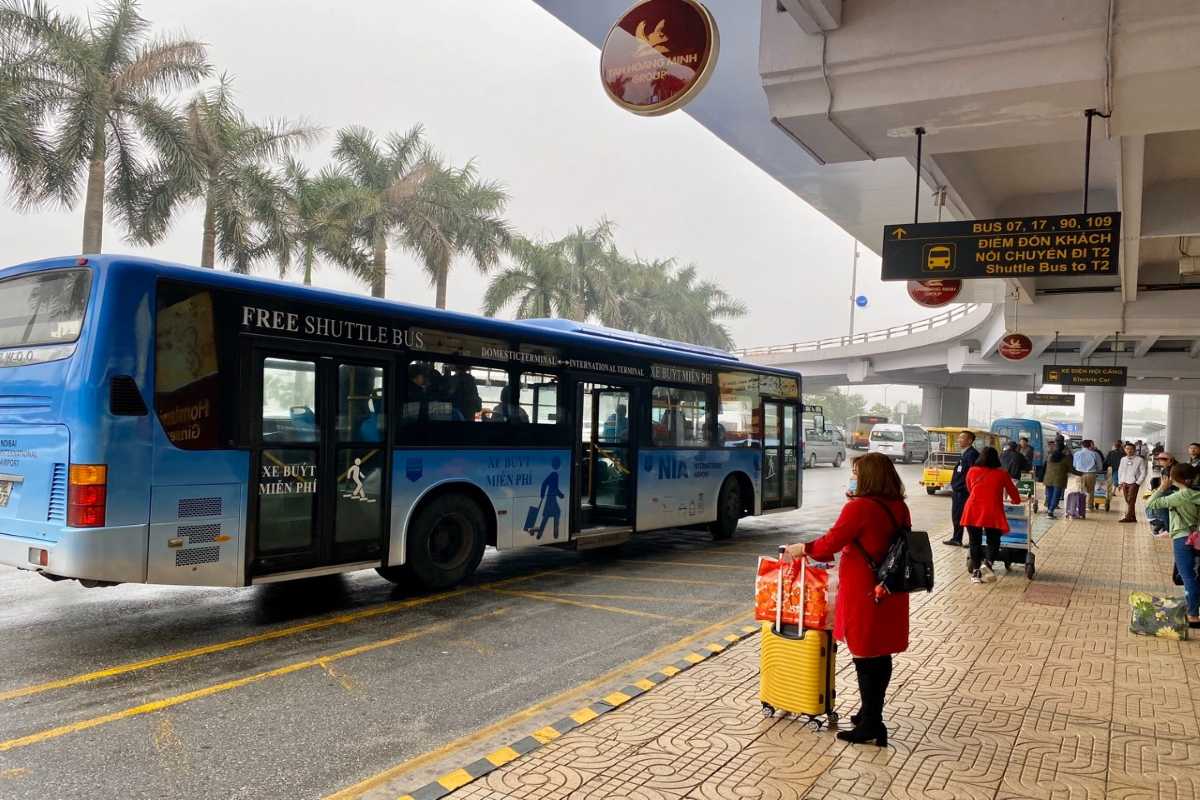
Planning Your Arrival and Departure
Planning your journey between Noi Bai International Airport and Hanoi city center is crucial for a stress-free travel experience. You have multiple transportation options to consider, each with different travel times, costs, and conveniences. Whether you’re heading to the bustling Old Quarter, serene Hoan Kiem Lake, or scenic West Lake, understanding your choices helps you pick the right mode of transport. This section offers a comprehensive overview of buses, taxis, ride-hailing apps, and private transfers, alongside tips for navigating airport procedures smoothly. With this knowledge, you can tailor your arrival and departure plans to your preferences and budget, ensuring a seamless start or finish to your trip.
Take the guesswork out of your transfer by exploring your options carefully and choosing what suits you best.
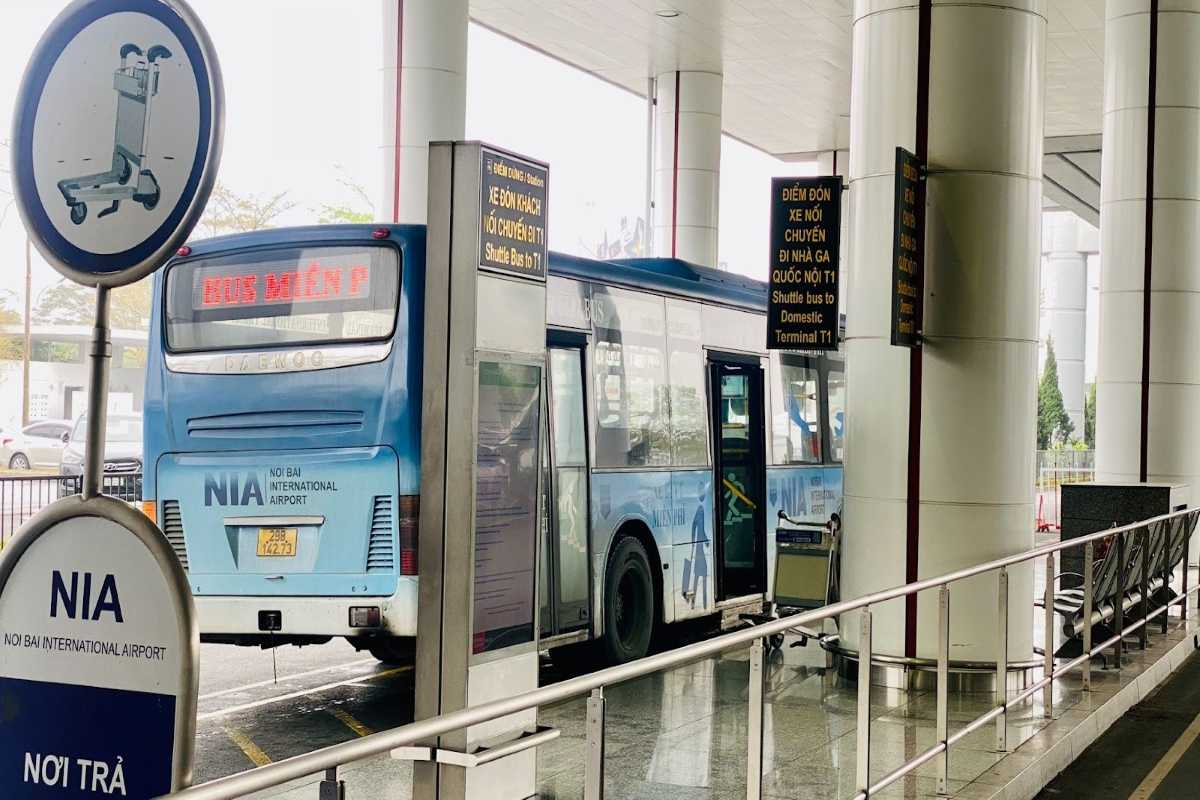
How to Get to and From Hanoi City Center
Travelers arriving at Noi Bai International Airport can reach Hanoi’s city center through several transport options. Public buses offer an economical choice with routes connecting the airport to key districts such as the Old Quarter. Taxis and ride-hailing services provide convenience and direct routes. For larger groups or travelers with heavy luggage, private transfers and shuttle services offer comfort and fixed pricing. Knowing the estimated travel times and costs for these options helps you plan your route efficiently and stay within your budget.
Choosing the best transit method can make your entry into Hanoi more enjoyable and hassle-free.
Using Public Bus Services — What You Need to Know
For budget-conscious travelers, public buses are a reliable way to get from Noi Bai International Airport to central Hanoi. Key routes include Bus 86 Express, which offers a direct connection to the city, along with routes 07 and 17 serving different areas. Bus stops are conveniently located at both terminals, and ticket prices are affordable, usually a few thousand Vietnamese dong. Payment can often be made in cash directly to the driver. Buses run frequently, but it’s wise to check the latest schedules as times may vary.
- Bus 86 Express: Direct, fast route from airport to Hanoi city center
- Routes 07 and 17: Alternative routes covering wider city areas
- Ticket prices: Affordable fares with simple cash payment
- Bus stops: Clearly marked locations at Terminals 1 and 2
Public buses provide an accessible option for getting to and from the airport without breaking your budget.
Alex's Budget Bus Ride: A Direct Route to the Heart of Hanoi
That particular morning, as the plane's wheels kissed the tarmac at Noi Bai International Airport, I felt a familiar thrill mixed with a delightful challenge. My mission for this Hanoi trip was simple: explore authentically and smartly, which meant starting with a budget-friendly transfer. The famous Bus 86 Express from the airport to the city center was calling my name.
Stepping out of Terminal 2, the Hanoi air enveloped me—a humid, vibrant scent hinting at motorbikes, street food, and damp earth. My senses immediately sharpened. I bypassed the eager taxi drivers and followed the clear "Public Bus" signs, a small internal cheer going off as I spotted the distinctive orange and yellow livery of the Bus 86, idling patiently near Pillar 3. It stood out, a modern, clean-looking vehicle amidst the chaotic dance of arriving cars.
There was a small group already waiting, a mix of backpackers like myself and a few locals. The bus doors hissed open, revealing a surprisingly spacious interior with dedicated luggage racks near the front. A friendly bus assistant, wearing a crisp uniform, greeted me with a nod and a polite, "Hanoi center?" I confirmed with a smile and handed over 50,000 VND (about $2 USD). He swiftly gave me change and a small ticket for the 45,000 VND fare, which felt like an absolute steal for a nearly hour-long journey.
I settled into a window seat, my backpack stowed securely, and took a deep breath. The air-conditioning was a welcome relief, a cool counterpoint to the warmth outside. As the bus pulled away from the airport, the sprawling, somewhat functional landscape gradually began to transform. Modern buildings gave way to a greener, more rustic scenery – paddy fields flashing by, interspersed with small, traditional houses. It was a gentle introduction to Vietnam, a slow unveiling of its rural beauty before the urban intensity.
The journey was a sensory delight. Through the panoramic window, I watched the world go by: locals zipping on scooters laden with improbable piles of goods, vibrant storefronts flashing by, and the occasional glimpse of ancient, gnarled trees shading street corners. The distant hum of city traffic grew steadily louder, a symphony of horns and engines that would soon become my soundtrack. The bus assistant periodically announced stops in both Vietnamese and reasonably clear English, which was a huge help.
My destination was a hostel just a few blocks from Hoan Kiem Lake, so I paid close attention as we passed landmarks like the Hanoi Opera House and the majestic Hanoi Central Post Office. When the bus finally pulled up to the stop closest to my hostel, right on the edge of the Old Quarter, I felt a rush of quiet triumph. The aroma of simmering pho and roasting coffee immediately hit me—I was truly here.
Stepping off the bus, the sheer energy of the Old Quarter enveloped me. The narrow streets buzzed with life, the air thick with the scent of spices, exhaust, and blooming flowers. And all of it, for less than the cost of a fancy coffee back home. My Public bus Noi Bai Airport ride wasn’t just a transfer; it was my first, authentic, and incredibly satisfying dive into the heart of Hanoi. It proved that sometimes, the most budget-friendly option offers the richest experience.
Alex's Go-To Tips for Your Bus 86 Adventure:
- Cash is Crucial: Have small denominations of Vietnamese Dong (VND) ready for the fare (45,000 VND). It makes the transaction quick and easy.
- Locate Your Stop Precisely: For Terminal 2 (International), the Bus 86 stop is right outside at Pillar 3. For Terminal 1 (Domestic), it's near Column 12. Look for the distinct orange bus!
- Embrace the Journey: Don't just stare at your phone. Look out the window! The ride offers a fantastic, low-cost introduction to the changing landscapes from rural to urban Hanoi.
- Know Your Destination Stop: Before boarding, pinpoint the closest Bus 86 stop to your accommodation using an offline map (like Google Maps). The bus assistant is helpful, but knowing your stop gives you confidence. Key stops include the Hanoi Opera House, Hanoi Central Post Office, and Hanoi Railway Station.
- Time It Wisely: While the Bus 86 Express is efficient, Hanoi traffic can be unpredictable. Factor in a bit of buffer time, especially during peak hours.
Taking the Public bus Noi Bai Airport was genuinely the perfect start to my Hanoi trip. It was economical, gave me an immediate feel for the local rhythm, and left me feeling like a seasoned traveler from the moment I arrived. Highly recommended!
Taxi and Ride-Hailing Options — Tips for a Smooth Ride
For those valuing convenience, taxis and ride-hailing apps like Grab are popular choices at Noi Bai International Airport. Reputable taxi companies such as Mai Linh and Vinasun operate official stands at both terminals. When using taxis, it’s important to confirm metered fares to avoid scams. Alternatively, the Grab app offers transparent pricing, driver ratings, and easy booking. Using ride-hailing apps can provide peace of mind, especially if you’re unfamiliar with local taxi practices. Avoid unofficial taxis or touts outside the terminal to stay safe.
Follow these tips to enjoy a hassle-free taxi or ride-hailing experience on arrival or departure.
Jessica's Grab Guru Guide: Seamless Hanoi Transfers
The gentle thud of the wheels on the runway, followed by the soft sigh of the aircraft's engines, signaled my arrival at Noi Bai International Airport. While the excitement of Hanoi’s vibrant chaos beckoned, my priority after a long flight was always a smooth, hassle-free transfer to my accommodation. I'd heard stories – both good and bad – about airport taxis in various countries, but in Vietnam, my trusted ally was the Grab app.
Even before leaving home, I'd ensured my Grab app was downloaded, my account set up, and a payment method (my credit card, though cash is also widely accepted) linked. The moment my plane touched down, I knew my first mission after immigration and collecting my luggage would be to get online. Thankfully, Noi Bai International Airport offers reasonably reliable free Wi-Fi (look for "Airport Free Wifi" and follow the simple registration steps). I connected, and watched my Grab app spring to life, ready for action.
Stepping out into the arrivals hall, a familiar sensory explosion of a new country greeted me: the cool artificial air of the terminal mingling with the humid, subtly spicy scent of Vietnam, punctuated by the excited chatter of arriving passengers and the rolling of luggage. Instead of heading to the traditional taxi queues, I followed the "Ride-Hailing Pick-up" signs, which led me to a slightly less chaotic area designated specifically for apps like Grab. For international arrivals (Terminal 2), this is typically near Pillar 8 or Pillar 11, a short, clearly marked walk from the exit.
I opened the Grab app, the interface now second nature to me. I confirmed my pick-up location as "Noi Bai International Airport T2," and then meticulously typed in the address of my boutique hotel nestled deep in the Old Quarter. Immediately, the magic of Grab unfolded. An upfront fare estimate appeared on my screen – 280,000 VND. No haggling, no surprises, just clear, transparent pricing. This instant clarity, knowing exactly what I’d pay before the ride even started, was a huge stress reliever.
I hit "Confirm Booking," and within mere seconds, a driver was assigned. His name, photo, car model (a sleek white sedan), and license plate number popped up on my screen. I could even see his car moving on the map, a tiny green icon inching closer to the airport. The wait was minimal, perhaps five minutes, giving me just enough time to take a deep, excited breath of Vietnamese air.
Sure enough, a car matching the description pulled up. I always, always double-check the license plate against the app – a crucial safety step that Grab makes easy. My driver, a kind-faced gentleman, confirmed my destination with a polite "Old Quarter?" I nodded, settled into the comfortable, air-conditioned back seat, and felt the day's travel fatigue begin to melt away.
The journey into Hanoi was a blur of new sights and sounds. The organized chaos of Vietnamese traffic, the constant ballet of motorbikes, the vibrant street life unfolding outside my window – it was all part of the immersive experience. I felt completely safe and in control, thanks to Grab's built-in features: the real-time GPS tracking (which I could even share with a friend if I wanted), and the direct communication with my driver through the app, which included a handy translation feature if needed.
We arrived at my hotel's doorstep in about 40 minutes, a smooth, direct ride. I thanked my driver, stepped out, and the payment was automatically processed through the app. No fumbling for cash, no language barrier at the crucial end point. It was perfection.
Jessica's "Grab Guru" Checklist for Noi Bai Transfers:
- Pre-Install & Set Up: Download the Grab app and complete your account setup (including payment method) before you even leave your home country. This saves precious time and data upon arrival.
- Connect Instantly: Utilize the free Wi-Fi Noi Bai Airport offers to ensure your app is updated and you can book immediately after landing.
- Know Your Pick-up Point: For international arrivals (T2), look for the clearly marked Grab pick-up zones, usually around Pillar 8 or Pillar 11. The app will guide you.
- Double-Check Everything: Always, always verify the driver's photo, name, car model, and especially the license plate number against what's shown in your app before getting into the car. This is your primary safety measure.
- Embrace Transparency: Love the upfront pricing! It eliminates negotiation and financial surprises. If you choose cash, have smaller denominations ready.
- Utilize Safety Features: Make use of the in-app tracking and the "share my ride" feature if you're traveling solo or want loved ones to track your progress.
Using Grab for my airport transfer from Noi Bai International Airport wasn't just about getting from A to B; it was about starting my Hanoi adventure with confidence and ease. It truly builds trust in modern ride-hailing as a reliable, transparent, and safe option for navigating a new city.
Private Transfers and Shuttle Services — When to Choose Them
Pre-booked private transfers from Noi Bai International Airport offer comfort and reliability, especially for families, groups, or those with large luggage. These services guarantee fixed prices and door-to-door convenience, reducing travel stress. They are ideal for late-night arrivals or travelers heading to destinations beyond central Hanoi. Shuttle services also provide a middle ground, combining affordability with some degree of comfort. Choosing private transfers can be a smart investment when prioritizing ease and punctuality.
Consider private transfers if you want a tailored travel experience from the airport to your destination.
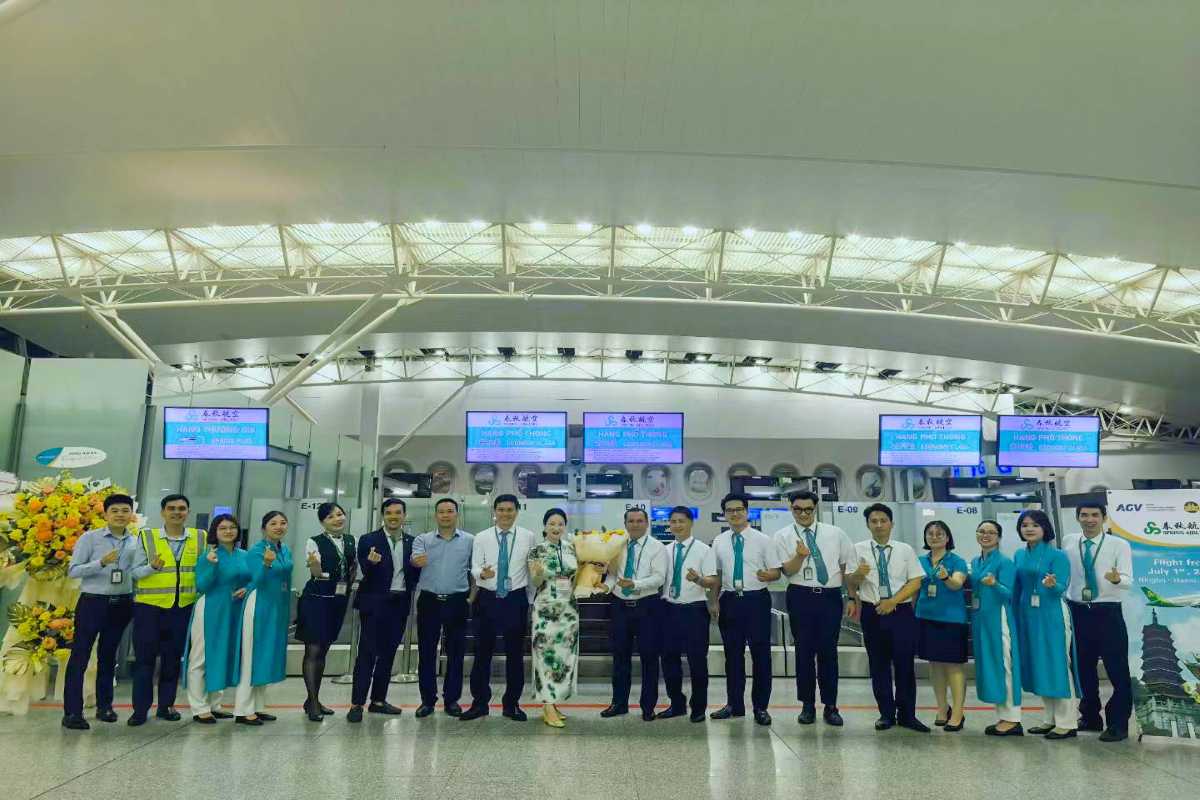
Navigating the Airport with Ease
Navigating Noi Bai International Airport can be straightforward when you know what to expect during check-in, security, and customs procedures. Familiarizing yourself with these steps reduces anxiety and helps you move through the airport efficiently. Clear signage, language support, and modern check-in options make the process accessible even for first-time visitors. Understanding where to go and what to prepare allows you to focus on your journey ahead, not the hassles of airport formalities.
Prepare yourself with these insights to confidently navigate Noi Bai International Airport and make your travel experience smoother.
Check-In Tips and Counters to Watch For
Checking in at Noi Bai International Airport is streamlined by various options. You can complete online check-in before arriving, or use self-service kiosks located near the terminals for a quick start. Baggage drop counters are clearly marked, and airline-specific check-in desks are easy to find thanks to well-placed signs. Typical wait times vary depending on flight schedules, so arriving early is recommended. Knowing where your airline’s counter is and how to use kiosks saves valuable time and reduces stress.
Mastering the check-in process ensures a hassle-free start to your airport experience.
Security and Customs Procedures Simplified
Security screening at Noi Bai International Airport follows clear protocols. You’ll be asked to remove electronics and liquids from your carry-on for inspection, and standard restrictions apply to liquids and sharp objects. Immigration includes fingerprinting and a photograph for identity verification. Keeping documents handy and following instructions expedites this process. Using fast-track lanes when available or traveling during off-peak times can also shorten wait times.
Being prepared for security and customs procedures helps you move swiftly and avoid unexpected delays.
Helpful Signage and Language Support
The airport features multilingual signs in Vietnamese and English, guiding passengers throughout terminals, check-in, security, and boarding areas. Information desks staffed by helpful personnel are placed strategically to assist with directions and questions. Learning a few basic Vietnamese phrases like “Xin chào” (hello) or “Cảm ơn” (thank you) can enhance communication and goodwill. These resources ensure that even non-Vietnamese speakers can navigate the airport with confidence.
Leveraging signage and language support builds ease and reassurance during your airport journey.
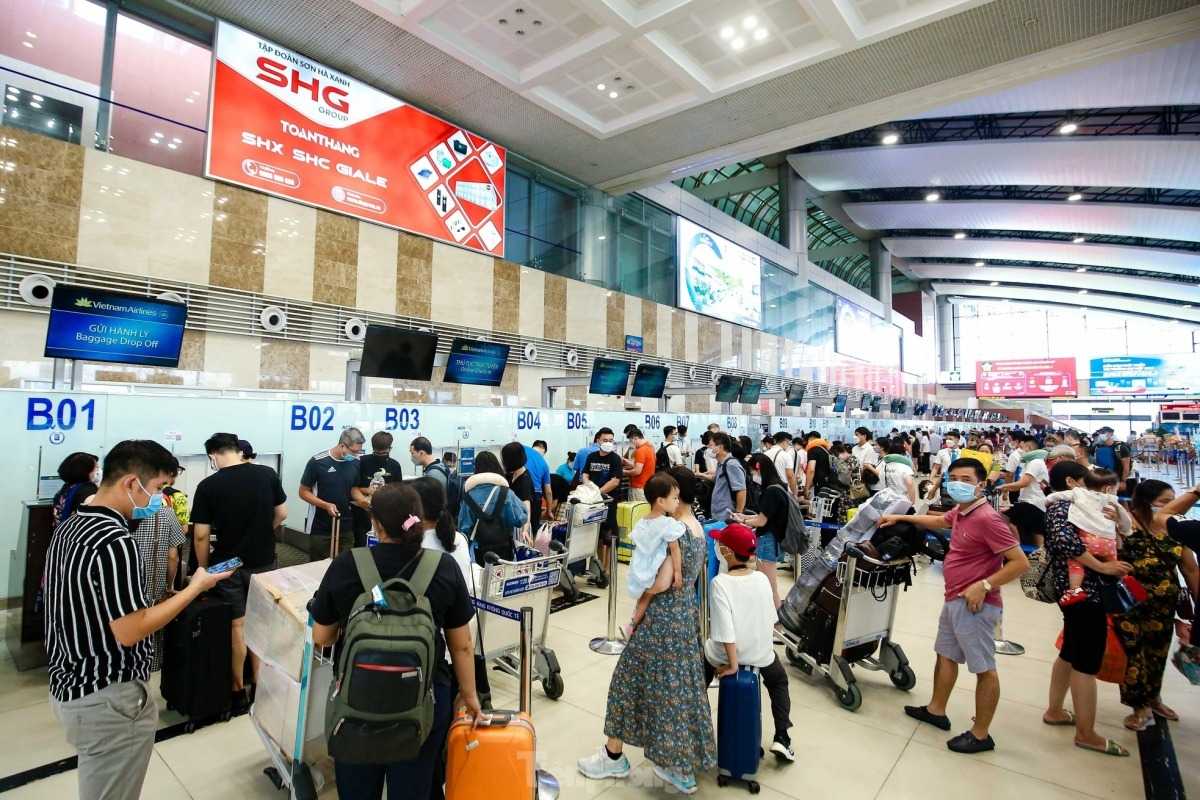
Parking and Transportation for Drivers
If you plan to drive to Noi Bai International Airport or rent a vehicle during your stay, understanding the available parking and car rental options is essential. The airport offers both short-term and long-term parking areas with clear signage and structured pricing. Several major car rental companies operate at the airport, with offices conveniently located near terminals. Familiarizing yourself with parking locations, fees, and rental procedures helps you plan your arrival and departure smoothly, whether you’re using your own car or renting one.
Knowing your options for parking and rental cars at Noi Bai International Airport ensures you have the right arrangements for your travel needs.
Parking Options and Pricing at Noi Bai
Noi Bai International Airport provides designated parking areas for both short-term and long-term stays. Short-term parking is located close to the terminals, ideal for quick drop-offs and pick-ups. Long-term parking lots are available at slightly greater distances but offer more affordable daily rates. Parking fees are typically charged by the hour or day, and electronic payment options are increasingly common. To avoid delays, consider your parking duration and choose the lot that best suits your plans.
Understanding parking logistics and pricing helps you avoid surprises and manage your time effectively.
Rental Cars and Drop-Off Points
Several international and local car rental companies, including major brands, maintain offices at Noi Bai International Airport. These rental desks are conveniently situated near arrivals in both terminals. The pick-up process usually involves presenting your documents and reservation details, while drop-off points are clearly marked for returning vehicles. Knowing the locations and procedures ahead of time makes renting a car hassle-free and allows you to plan your transfers and onward travel without stress.
Prepare your rental car arrangements early to enjoy smooth vehicle access during your visit.

Making the Most of Your Time at Noi Bai Airport
Waiting at Noi Bai International Airport can be more than just passing time—it’s an opportunity to savor authentic Vietnamese flavors, shop for unique souvenirs, and relax in comfort. From delicious local cuisine to duty-free shopping and comfortable lounges, the airport offers amenities that cater to diverse traveler needs. Whether you have a short layover or ample time before your flight, exploring these options enhances your overall travel experience. Knowing where to find the best dining, shopping, and services allows you to enjoy your wait with ease and pleasure.
Take advantage of the airport’s offerings to make your time at Noi Bai International Airport enjoyable and memorable.
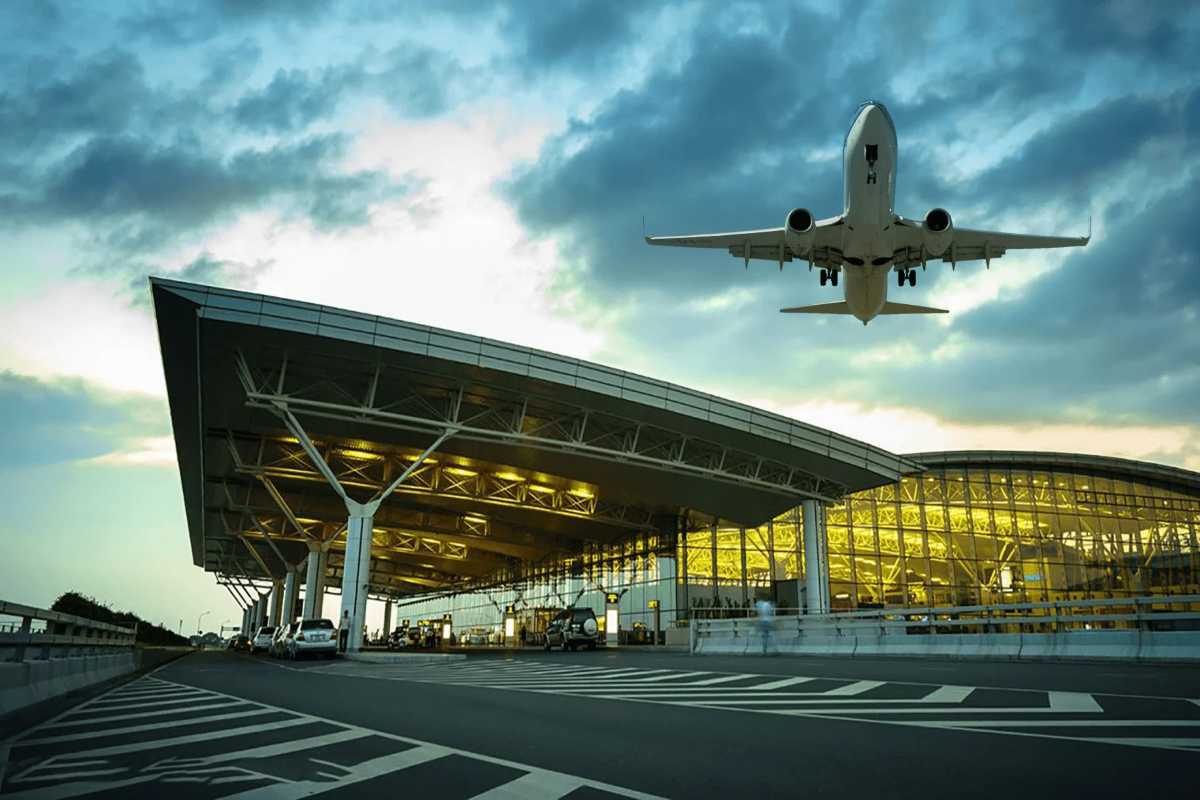
Dining and Shopping Highlights
At Noi Bai International Airport, travelers can indulge in authentic Vietnamese cuisine and browse a variety of shopping options. The airport features eateries serving traditional dishes such as Pho, Banh Mi, and strong Vietnamese coffee, providing a true taste of local culture. For those interested in shopping, duty-free outlets offer popular products like alcohol, cosmetics, and perfumes. Unique Vietnamese souvenirs such as silk textiles, coffee beans, and handcrafted items are also available, perfect for gifts or keepsakes. This blend of dining and shopping options ensures you can satisfy hunger and find meaningful items before your flight.
Discover great meals and souvenirs that capture the essence of Vietnam during your airport time.
Best Places to Eat Local Vietnamese Cuisine
Several restaurants and food stalls within Noi Bai International Airport offer classic Vietnamese dishes. Popular options include Pho, a fragrant noodle soup rich with herbs, and crispy Banh Mi sandwiches filled with fresh ingredients. Vietnamese coffee, known for its bold flavor and unique preparation, is a must-try for coffee lovers. Prices are generally reasonable, with meals ranging from affordable snacks to full dishes. These eateries provide a convenient way to enjoy authentic flavors and refresh yourself before your flight.
Planning a meal here lets you savor Vietnam’s culinary heritage right at the airport.
Emily's Farewell Pho: A Last Taste of Vietnam at Noi Bai
The weight of my backpack felt different on my shoulders as I checked in for my departing flight from Noi Bai International Airport. It wasn't just the souvenirs; it was the accumulated memories, the flavors, the sounds of Vietnam clinging to me. My flight wasn't for a few hours, and while most people might head straight for duty-free or their gate, I had one last, crucial mission: a final, perfect bowl of pho.
Hanoi had captured my heart with its bustling streets, its vibrant colors, and above all, its incredible food. Every day had been a culinary adventure, and I couldn't imagine leaving without one last, authentic taste. I knew airport food could be hit or miss, but I had a hunch. After clearing security in Terminal 2, I navigated through the bright, modern concourse, past international fast-food chains, searching for something distinctly Vietnamese.
And there it was: a modest-looking eatery, often simply called "Pho" or a variation like "Big Bowl Pho" or "Pho Viet," with the unmistakable aroma wafting out. The air around it was rich with the scent of star anise, ginger, and slow-simmered beef broth – the quintessential perfume of Vietnam. A wave of comfort washed over me. The ambiance, despite being in an airport, felt surprisingly warm and inviting. There were simple wooden tables, a large, steaming pot at the counter, and a mix of locals and tourists, all united by a shared appreciation for Vietnam's national dish.
I approached the counter, the steam from the massive pho pot clouding my glasses. "Phở bò, please," I requested, pointing to the familiar beef noodle soup. The woman behind the counter, with a kindly smile, ladled the aromatic broth into a bowl, adding slippery rice noodles, thin slices of tender beef, and a generous scattering of fresh herbs – green onions, cilantro, and mint. The colors were vibrant, the steam rising in delicate tendrils.
I found a quiet table by the window, watching planes taxi, a stark contrast to the steaming bowl before me. The first spoonful of broth was pure magic. It was rich, deeply savory, with that characteristic sweetness and warmth that only comes from hours of simmering. It was exactly like the pho I’d savored in tiny street stalls across Hanoi, perhaps even better than some, defying my low expectations for airport fare.
I added a squeeze of lime, a few fresh chili slices, and a handful of crisp bean sprouts, customizing it just as I'd learned to do. Each slurp of the noodles, each bite of the tender beef, was a small, quiet celebration of my time in Vietnam. The comforting warmth spread through me, a delicious final embrace from a country I already longed to return to. It wasn't just a meal; it was a moment of reflection, a poignant farewell to the vibrant tastes that had defined my journey.
Looking around, I noticed others doing the same – some eating quickly, others lingering, savoring their last moments. The simple act of eating this iconic dish, here, at the threshold of departure, felt profoundly authentic. It wasn't a rushed, bland airport meal; it was a deliberate, flavorful conclusion to an unforgettable trip.
For any traveler passing through Noi Bai International Airport, don't just grab a coffee or a quick sandwich. Seek out the Vietnamese food options, especially a bowl of pho. It's often surprisingly good and offers a final, delicious opportunity to connect with the incredible culinary soul of Vietnam. My "farewell pho" wasn't just a meal; it was a perfect, comforting punctuation mark at the end of an extraordinary adventure.
Duty-Free Shopping and Souvenirs to Look For
The duty-free shops at Noi Bai International Airport offer a wide range of products. Popular purchases include premium alcohol, cosmetics, and perfumes from international brands. For authentic Vietnamese souvenirs, you can find silk fabrics, roasted coffee beans, and traditional handicrafts. These items make thoughtful gifts or keepsakes and are conveniently available just before boarding. Shopping tips include comparing prices and checking product authenticity to ensure the best value.
Use this guide to pick meaningful and quality souvenirs during your airport stop.
Robert's Lantern Shopping Spree: Finding the Perfect Hanoi Keepsake
My time in Hanoi was winding down, and a pleasant, low-level anxiety had begun to hum beneath my excitement for the next leg of my journey. I hadn't yet found the souvenir. Not just any trinket, mind you, but that one special item that would instantly transport me back to the vibrant chaos and quiet charm of this city. My eye had been caught throughout my trip by the exquisite silk lanterns that glowed softly from shopfronts and even illuminated alleyways, and I decided this was it. I needed to find the perfect Hanoi lantern.
My hunt began, fittingly, in the heart of the Old Quarter. The narrow streets, each traditionally dedicated to a specific trade, were a dizzying tapestry of sights and sounds. Hang Gai, the "Silk Street," shimmered with fabrics. Hang Bac, the "Silver Street," gleamed with jewelry. But I was looking for the soft glow of silk and bamboo. The air was thick with the scent of incense, simmering pho, and the faint, sweet smell of drying herbs from a nearby pharmacy. Motorbikes whizzed past, their horns creating a constant, lively symphony.
I ducked into a small shop on a side street, its interior a dazzling constellation of lanterns in every imaginable size, shape, and color. My senses were immediately overloaded. They hung from the ceiling, stacked neatly on shelves, and even sat nestled on the floor, their silk skins taut over intricate bamboo frames. Some were classic round or oval, others shaped like lotus flowers, fish, or even dragons. The colors ranged from deep, auspicious reds to vibrant blues, sunny yellows, and serene greens.
I spent a good half hour just admiring them, my fingers tracing the delicate embroidery on a pale pink lotus lantern. The shop owner, a grandmotherly woman with kind eyes and a warm smile, watched patiently. She wasn't pushy, a refreshing change from some of the more boisterous market vendors. When I finally pointed to a medium-sized, intricately patterned red lantern, she nodded, pulling it down carefully.
"Very good luck," she murmured in broken English, holding it up. Its silk shimmered in the shop's soft light. I noticed how easily it collapsed, designed perfectly for a traveler's luggage. This was a crucial detail for my carry-on-only philosophy. We settled on a price after a little friendly back-and-forth, a ritual I’d come to enjoy in Hanoi. Her smile widened as I counted out the VND. It felt like more than just a transaction; it was a small cultural exchange.
Later, I spotted another potential lantern at Noi Bai International Airport itself, within one of the dedicated souvenir shops in Terminal 2's departure lounge. The airport shops, I'd noticed, carried a curated selection of Vietnamese handicrafts, including silks, lacquerware, and yes, lanterns. While the prices were a little higher than in the Old Quarter, the convenience and quality were still excellent, especially for a last-minute find. They also offered secure packaging, which was a bonus. I found a smaller, delicate yellow one, perfect as a gift for a friend, its silk smooth to the touch. The fluorescent airport lights couldn't diminish its subtle charm.
Holding my two chosen lanterns – one for myself, one for a loved one – I felt a profound sense of satisfaction. They weren't just objects; they were miniature reflections of Hanoi's beauty, craftsmanship, and the quiet moments of connection I'd experienced. They would light up a corner of my home, a constant, gentle reminder of this incredible journey.
Robert's Savvy Souvenir Shopping Tips:
- Look Early, Buy Smart: Start Browse for souvenirs early in your trip. This gives you time to compare prices, quality, and find exactly what you love. Don't feel pressured to buy the first thing you see.
- Embrace the Haggling (Respectfully): In local markets, polite bargaining is expected and part of the cultural experience. Approach it with a smile, a friendly attitude, and a sense of humor. Don't be aggressive or disrespectful.
- Consider Portability: If you're traveling light, prioritize souvenirs that are foldable, collapsible, or not easily broken. Vietnamese silk lanterns are perfect for this!
- Authenticity Matters: Try to buy directly from artisans or smaller, independent shops. This often ensures you're getting a handmade, authentic item and supporting local craftsmanship.
- Don't Dismiss Airport Shops: For last-minute gifts or high-quality, pre-packaged items, the souvenir shops at Noi Bai International Airport (particularly in Terminal 2 after security) are surprisingly good. While slightly pricier, the convenience and quality can be worth it.
- Follow Your Heart (and Nose): Let your senses guide you. The scent of a particular spice, the feel of a specific fabric, or the sight of a vibrant color can lead you to the most meaningful keepsake.
Finding the perfect lantern wasn't just about the purchase; it was about the journey of discovery, the quiet interactions, and the satisfaction of taking a tangible piece of Hanoi's luminous spirit home with me. My Hanoi keepsake lanterns are more than just decorations; they're glowing memories.

Relaxing Before Your Flight
When waiting at Noi Bai International Airport, finding a comfortable place to relax and recharge can significantly improve your travel experience. The airport offers several lounges, free Wi-Fi, and charging stations designed to help you unwind and stay connected. Whether you have a long layover or simply want to escape the busy terminal, these amenities provide the perfect environment for rest and convenience.
Take advantage of these facilities to make your time at Noi Bai International Airport restful and productive.
Airport Lounges and Access Tips
Noi Bai International Airport features premium lounges such as the Vietnam Airlines Lounge and the NIA Business Lounge. Access to these lounges is typically available to business class passengers, frequent flyers, or those holding memberships like Priority Pass. Some credit cards also offer complimentary access. Amenities include comfortable seating, complimentary food and beverages, Wi-Fi, showers, and quiet workspaces. Knowing how to gain entry helps travelers enjoy a peaceful and well-equipped environment before their flights.
Consider lounge access to elevate your airport experience with comfort and exclusivity.
Daniel's Lounge Oasis: Pre-Flight Tranquility at Noi Bai
The rhythmic rumble of departing luggage carts and the melodic chime of boarding announcements usually signal the final, hectic sprint of a trip. But at Noi Bai International Airport, as my flight back home loomed, I decided to defy the usual airport rush. I sought refuge, a quiet interlude before plunging back into the skies. My destination: one of Noi Bai’s airport lounges.
Having spent the previous two weeks immersed in Vietnam's glorious chaos—the vibrant markets, the incessant symphony of motorbikes, the bustling street food scenes—my senses were delightfully overloaded. Now, as I approached Terminal 2, past security, a different kind of calm was needed. I had a few hours to spare, and rather than jostle for a hard plastic seat at a crowded gate, I opted for a pre-flight indulgence.
I followed the discreet signs pointing towards the "Business Lounge" on the upper floor, a sense of anticipation building. The moment I stepped through the automatic doors of the ACV Business Lounge (or the NIA Business Lounge, as it's sometimes called), a profound sense of tranquility washed over me. The low hum of polite conversation replaced the airport’s incessant din. The air, instead of smelling faintly of jet fuel and hurried travelers, carried a subtle, pleasant aroma – perhaps a hint of fresh coffee and light pastries.
The lounge was a spacious, elegantly designed sanctuary. Soft, comfortable armchairs and sofas were arranged in intimate groupings, many facing floor-to-ceiling windows that offered a mesmerizing view of the tarmac. I watched, fascinated, as planes glided in and out, a silent ballet against the bright Hanoi sky. It felt like a privileged, detached perspective on the very machine of travel I was about to join.
My first stop was the buffet. A generous spread awaited: warm, freshly prepared Vietnamese dishes like savory spring rolls and fragrant stir-fries, alongside international options, fresh fruit, and an array of enticing pastries. I piled a plate high with a mix, then headed to the beverage station. Self-serve coffee machines offered a rich, aromatic brew, alongside juices, soft drinks, and even a selection of local beers and spirits. I poured myself a strong Vietnamese coffee, the dark liquid promising a final, delightful jolt.
Settling into a plush armchair, with my coffee and plate, I exhaled. The Wi-Fi was fast and reliable, allowing me to catch up on emails without interruption, upload a few last photos, and check the news, all without a single drop-out. There were charging ports discreetly placed by almost every seat, a small but significant detail that speaks volumes about understanding a traveler's needs. I saw other travelers doing the same: some working on laptops, others engrossed in books, a few quietly chatting, their voices never rising above a gentle murmur.
I even spotted a dedicated quiet zone with more reclined seating, and thought about indulging in a brief nap. The lounge also offered clean, well-maintained shower facilities, a true blessing for those connecting flights or arriving from a long day of sightseeing. While I didn't need one this time, the thought of being able to refresh before a long flight was incredibly appealing.
The hours seemed to melt away. There were flight information display screens strategically placed, so I never felt anxious about missing my boarding call. The attentive staff discreetly cleared plates and refilled drinks, their movements quiet and efficient.
My time in the Noi Bai International Airport lounge wasn't just a wait; it was an extension of my vacation. It transformed what could have been a stressful pre-flight period into one of pure, unadulterated relaxation and efficiency. It wasn't about escaping the airport; it was about elevating the airport experience itself.
Daniel's Deep Dive into Lounge Benefits:
- Pre-Book or Credit Card Access: Check if your airline, credit card (many premium cards offer lounge access like Priority Pass or LoungeKey), or a loyalty program grants you complimentary access. Otherwise, day passes are often available for purchase directly at the lounge or through online platforms like Klook or Traveloka.
- Locate It Early: After clearing security in Terminal 2 (for international flights), the main international lounges like ACV Business Lounge (also known as NIA Business Lounge or Song Hong Business Lounge) are typically located on the 4th floor near gates 28-31. Follow the clear signage.
- Embrace the Amenities: Don't just sit there! Take advantage of the complimentary food and drinks, comfortable seating, high-speed Wi-Fi, and charging stations. If offered, consider using the showers for a refreshing boost.
- Quiet & Productive Space: Lounges offer a significantly calmer environment than the main terminal, making them ideal for catching up on work, making important calls, or simply unwinding in peace.
- Time Management: While relaxing, keep an eye on the flight information displays within the lounge to ensure you don't miss your boarding time.
My Noi Bai lounge experience wasn't just about escaping the hustle; it was about adding a layer of sophisticated comfort and tranquility to my journey, leaving me refreshed and ready for the next leg of my adventure. It’s an investment in your peace of mind.
Other Services: Wi-Fi, Charging Stations, and More
Beyond lounges, Noi Bai International Airport provides free Wi-Fi throughout the terminals, with easy registration steps. Charging stations are conveniently located near seating areas, ensuring your devices stay powered. Additional services include prayer rooms for spiritual needs, designated smoking areas, and ATMs for cash withdrawals. These facilities cater to diverse traveler needs, enhancing comfort and convenience during your time at the airport.
Utilize these services to stay connected, refreshed, and comfortable while you wait for your flight.
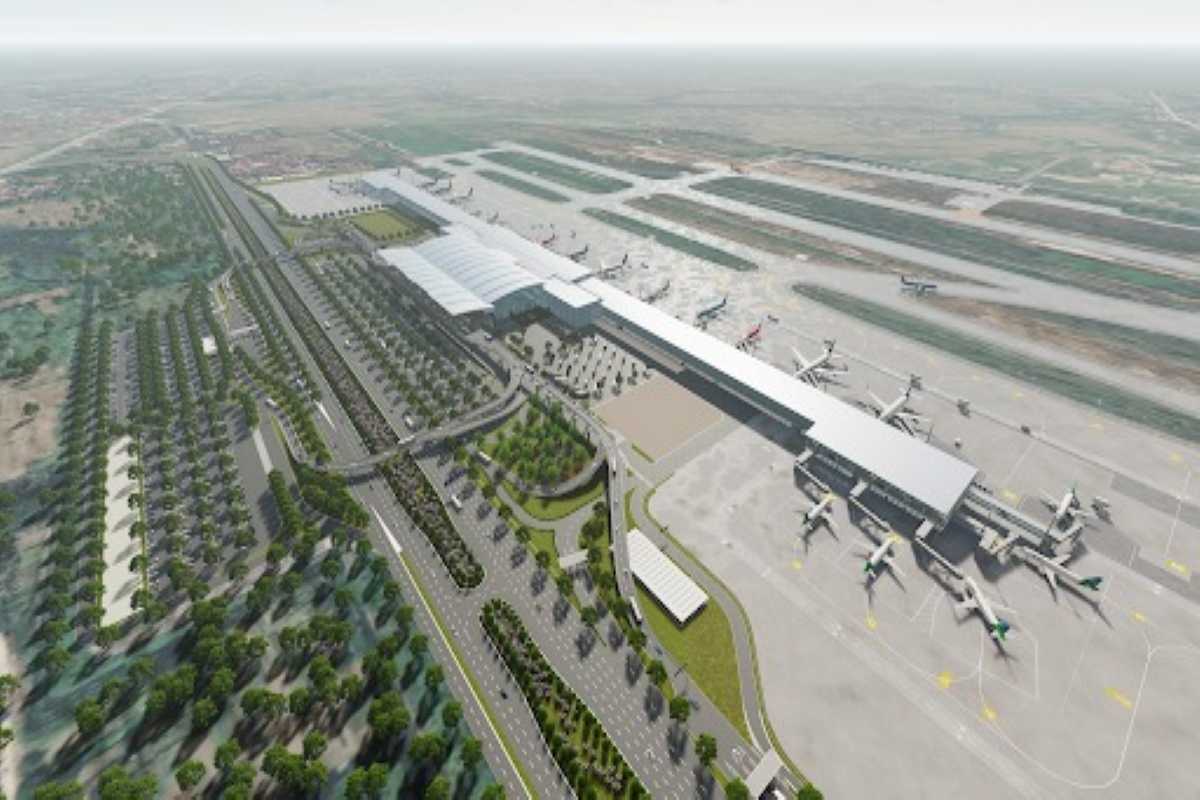
Special Services and Accessibility
Noi Bai International Airport offers a range of accessibility services and family-friendly facilities to ensure all travelers feel supported and comfortable. These amenities are designed to accommodate passengers with disabilities as well as families traveling with young children. Knowing what support is available helps you prepare for a stress-free visit, no matter your needs.
Explore the airport’s specialized services to enjoy a smooth and inclusive travel experience.
Keyword Usage Summary:
Support for Travelers with Disabilities
Travelers with disabilities can access comprehensive assistance at Noi Bai International Airport. Services include wheelchair support, accessible ramps, and specially equipped restrooms. It is recommended to request help in advance through your airline or the airport’s customer service to ensure smooth coordination. Staff members are trained to provide discreet and efficient assistance from arrival through departure, allowing disabled passengers to navigate the airport comfortably and safely.
Planning ahead for accessibility services ensures a more pleasant and stress-free journey.
Family-Friendly Facilities and Kid Zones
Families traveling through Noi Bai International Airport will find thoughtful facilities designed to ease their experience. Baby care rooms are available for diaper changes and feeding, while designated play areas help children expend energy before flights. Family restrooms provide privacy and convenience. Practical tips for traveling with children include arriving early to accommodate extra needs and packing familiar snacks or toys. These provisions help families maintain calm and comfort during busy airport moments.
Utilize family-friendly amenities to keep your little ones happy and relaxed while navigating the airport.
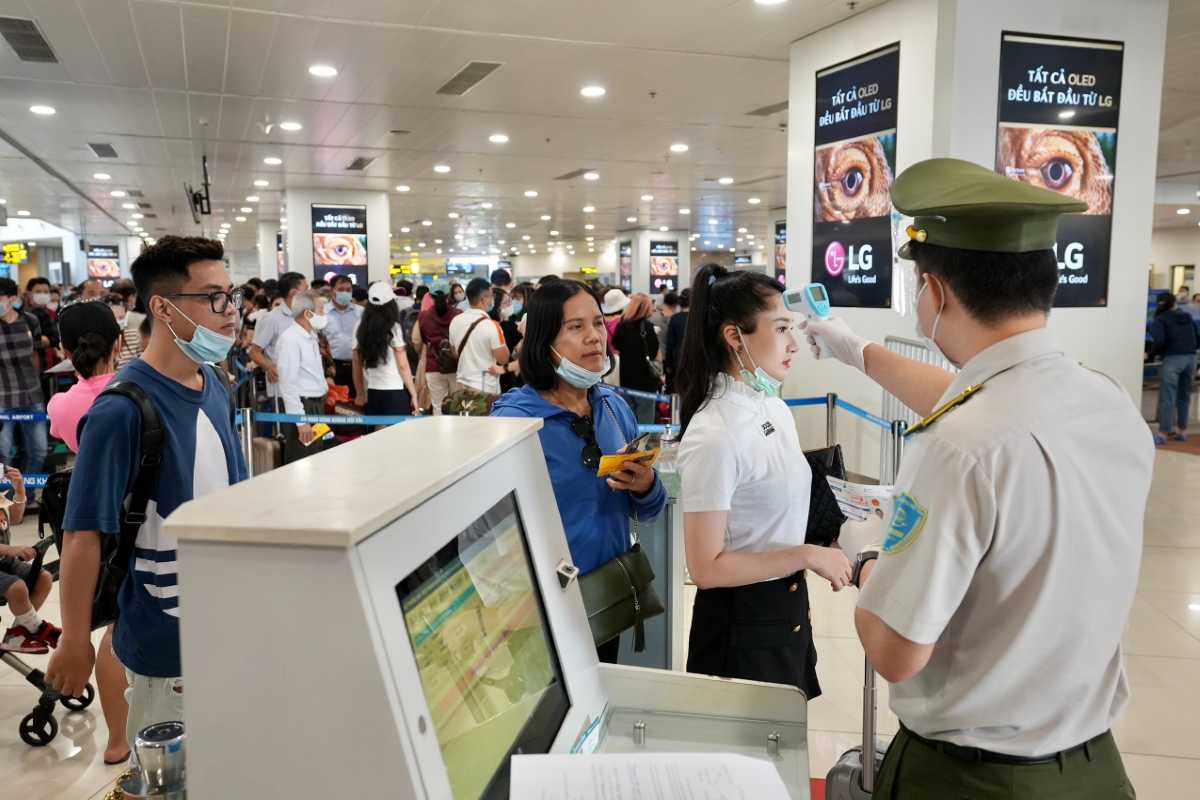
Navigating Layovers and Transit at Noi Bai
Managing layovers and transit at Noi Bai International Airport can be straightforward and even enjoyable with the right information. Whether you have a long layover and want to explore Hanoi, or a short connection that requires efficient navigation, knowing your options helps minimize stress. Additionally, nearby airport hotels offer convenient places to rest and refresh during transit. This section offers practical advice and recommendations to help you make the most of your time at or around Noi Bai International Airport.
Equip yourself with these tips to turn layovers into opportunities and transit into comfort.
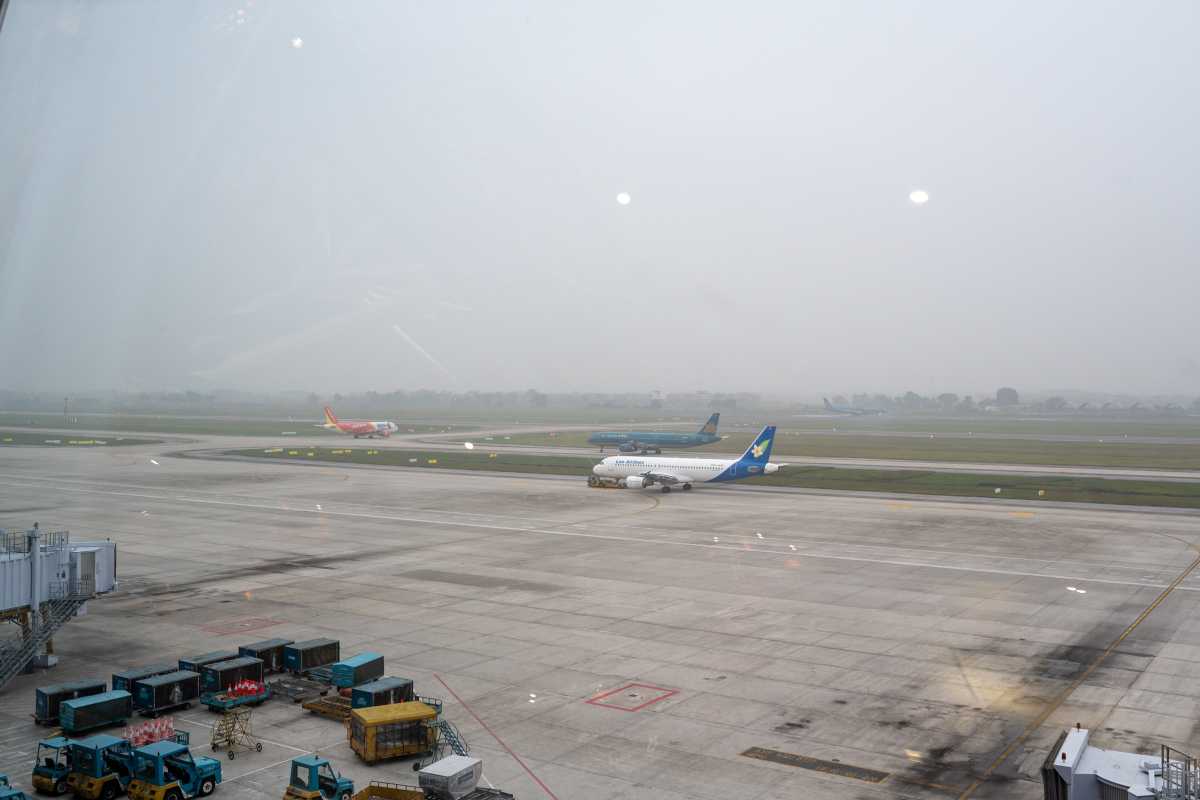
Long Layover? Exploring Hanoi from the Airport
If your layover at Noi Bai International Airport is long enough, you can leave the airport to explore Hanoi. Before doing so, be sure to understand Hanoi transit visa requirements, which vary based on nationality and layover duration. Popular quick excursions include a visit to Hanoi’s Old Quarter or nearby temples, which provide a glimpse into Vietnam’s rich culture. Travel times to the city center are usually 30 to 45 minutes by taxi or shuttle, and costs are reasonable. Planning your trip carefully ensures you have enough time to return for your connecting flight without stress.
Make your long layover a memorable mini-adventure by exploring Hanoi’s highlights near the airport.
David's Hanoi Layover Adventure: A Whirlwind Tour to the Old Quarter
A six-hour layover at Noi Bai International Airport usually means endless scrolling, overpriced airport food, and general ennui. But for me, it spelled opportunity. I'd always regretted not visiting Hanoi on a previous trip, and this was my chance for a whirlwind introduction. My goal: a quick dash to the Old Quarter to soak in some authentic Hanoi vibes.
The first hurdle was the visa. As a US citizen, I knew I'd need one to leave the airport's transit area. I'd applied for an e-Visa online a couple of weeks in advance, making sure it was approved before my flight. This was crucial; always check visa requirements for your nationality if you plan to exit the airport during a layover. Upon arrival, clearing immigration with my pre-approved e-Visa was surprisingly swift.
Next, luggage. I only had a carry-on, which made things easy. If I'd had checked bags, I would have used the luggage storage facility at Terminal 2 (on Level 2), which charges a small fee (around 70,000 VND for 12-24 hours). This allowed me to be nimble and unburdened.
With about 4.5 hours to play with after immigration and before needing to be back for boarding, I calculated my time. The Bus 86 Express from Noi Bai to the city center seemed like the smartest option. Taxis or Grab would be faster, but I wanted to experience a bit of local life from the get-go. I knew traffic could be a beast, so I factored in generous buffer times.
I found the Bus 86 stop easily outside Terminal 2, near Pillar 3. The bus cost a mere 45,000 VND (less than $2 USD), paid directly to the assistant on board. The journey into the Old Quarter took about an hour, weaving through the outskirts, gradually intensifying with each passing kilometer. The bus was comfortable, air-conditioned, and surprisingly quiet, a stark contrast to the cacophony I was anticipating.
As the bus pulled up to a stop near Hoan Kiem Lake, right on the edge of the Old Quarter, I practically leaped off. The air immediately changed – a dense, intoxicating mix of exhaust fumes, simmering pho, roasting coffee, and damp earth. Motorbikes, like a liquid river, flowed ceaselessly through the narrow streets. The vibrancy was instantaneous.
I had a limited agenda: walk around Hoan Kiem Lake, maybe grab some street food, and just feel the energy. The lake, with its iconic Turtle Tower and Ngoc Son Temple, was a serene emerald amidst the urban rush. I spent 20 minutes just walking, soaking in the views, watching locals exercise and chat. The Old Quarter itself was a maze of narrow lanes, each traditionally dedicated to a specific craft. I drifted down Hang Bac (Silver Street), catching glimpses of artisans at work, and then got gloriously lost in a narrower alleyway, stumbling upon a tiny coffee shop.
It was there, perched on a miniature plastic stool on the sidewalk, that I had my moment. A strong, sweet Vietnamese iced coffee in hand, watching life unfold on the street, I felt utterly immersed. A group of elderly men played a game of chess, their faces etched with concentration. A woman expertly balanced baskets of fruit on a shoulder pole. The constant, rhythmic murmur of street life was mesmerizing. This was the Hanoi I'd imagined.
After about an hour of wandering and sipping, I knew it was time to head back. I navigated my way back to the Bus 86 Express stop (near the Central Post Office for the return journey), bought another ticket, and settled in for the ride back to Noi Bai. The return journey was just as smooth, giving me ample time to reflect on my whirlwind adventure. I arrived back at the airport with just over an hour and a half before boarding, plenty of time to clear security again and head to my gate.
My Hanoi layover adventure was an unqualified success. It proved that even with limited time, you can get a meaningful taste of a city, enriching your travel experience far beyond the confines of an airport terminal.
David's Layover Lessons for Fellow Travelers:
- Visa First, Always: Before anything else, confirm visa requirements for your nationality if you intend to leave the airport. An e-Visa (applied for in advance) is often the easiest route for short stays.
- Time Management is Key: Seriously, be realistic. Factor in immigration, luggage retrieval/storage, travel to and from the city, and buffer time for unexpected delays. For Hanoi, a minimum of 5-6 hours total layover is advisable for a quick Old Quarter trip.
- Choose Efficient Transport: The Bus 86 Express is fantastic for budget and directness. For more speed and convenience, Grab or a pre-booked taxi might be better if you're tight on time (though traffic is still a factor).
- Pack Light or Store: Traveling with only carry-on makes spontaneous excursions much easier. If you have checked bags, utilize the airport's luggage storage facilities (located in T2 at Noi Bai) to avoid dragging them around.
- Focus Your Sightseeing: Don't try to see everything. Pick one or two key areas or experiences (like the Old Quarter and Hoan Kiem Lake) and immerse yourself fully. A brief, deep dive is more satisfying than a rushed, superficial tour.
- Stay Connected: Have a local SIM card or rely on the airport's free Wi-Fi and offline maps (like Google Maps) to navigate confidently.
- Be Back Early: Always aim to be back at the airport with ample time (at least 2 hours before an international flight) to clear security and reach your gate without stress.
A layover doesn't have to be wasted time. With a bit of planning and an adventurous spirit, it can become an unexpected highlight of your journey, leaving you with vivid memories like my short but sweet Hanoi Old Quarter escapade.
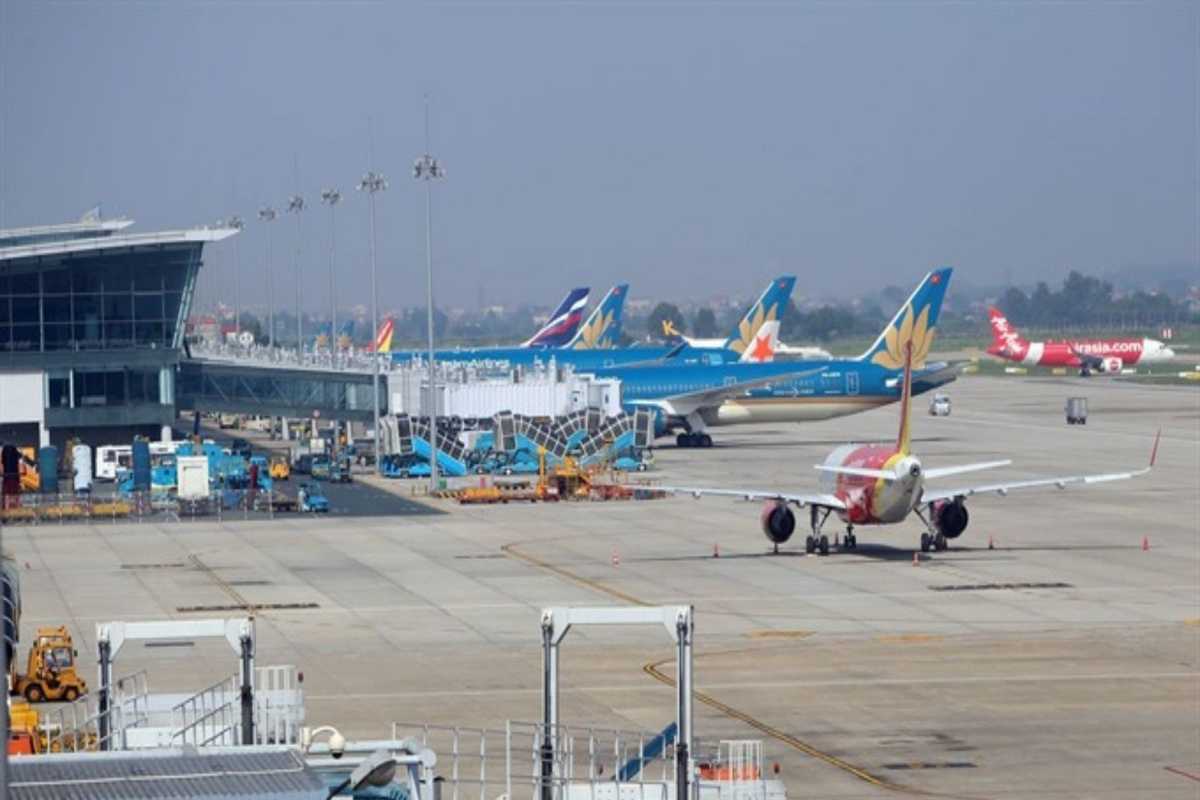
Short Layover? Making Your Connection Seamless
If you have a short layover at Noi Bai International Airport, careful planning is key to catching your next flight on time. Recommended minimum connection times vary depending on whether you are transferring between international flights or connecting from international to domestic. Navigating between Terminal 1 and Terminal 2 requires time for shuttle transfers and security re-checks. Following step-by-step instructions—such as knowing where to go, using priority lanes when available, and staying aware of gate changes—helps ensure a smooth transfer and reduces stress.
Use these short layover connection tips Noi Bai to make your transit as quick and efficient as possible.
Maria's Mad Dash: Successfully Making a Tight Noi Bai Connection
The dread hit me the moment the pilot announced our delayed departure from Singapore. What was supposed to be a comfortable two-hour layover at Noi Bai International Airport for my connecting flight to Da Nang had just shrunk to a nail-biting 55 minutes. My heart hammered against my ribs. This wasn't just a missed connection; it was potentially missing a crucial meeting in Da Nang. This was it: Maria's mad dash.
As soon as the seatbelt sign clicked off, I was on my feet, backpack already slung over my shoulder. My strategy was clear: speed, information, and a little bit of strategic pleading. I knew my inbound flight landed at Terminal 2 (International) and my connecting flight, even if it was a domestic one on Vietnam Airlines, would likely depart from Terminal 1 (Domestic). That meant immigration, baggage (thankfully, I only had carry-on!), then the inter-terminal shuttle. Every second counted.
The first challenge was immigration. The queues for foreigners at Noi Bai can sometimes be lengthy, a sea of tired faces and passports. I scanned the hall frantically. Thankfully, Vietnam has implemented some e-gate options for certain passport holders, and while mine wasn't eligible, I spotted a slightly shorter queue staffed by a very efficient-looking officer. I approached him, clutching my connecting boarding pass, and with a polite but urgent tone, explained my tight connection, pointing to the boarding time. His expression softened slightly, and with a curt nod, he motioned me forward. A small victory, but a victory nonetheless.
Through immigration, I literally power-walked towards the inter-terminal shuttle bus stop, following the prominent signs. The humid air of the terminal felt thick, but adrenaline was my fuel. The shuttle stop for Terminal 1 is well-marked outside Terminal 2. As luck would have it, a bus was just pulling up. I practically sprinted onto it, a quick glance at my watch confirming I had precisely 30 minutes left until my new boarding time. The bus ride between terminals usually takes about 10-15 minutes, so the clock was ticking, loudly.
The moment the shuttle bus doors opened at Terminal 1, I was out, weaving through the small groups of people, heading straight for the domestic check-in area. My airline's counter was already relatively quiet, most passengers for earlier flights having already departed. I approached the desk, my voice perhaps a little breathless. "Flight to Da Nang, very tight connection!" I explained, pushing my passport and boarding pass across the counter. The staff member, understanding the urgency, quickly processed my check-in, issued a new boarding pass (confirming my gate number, which I immediately committed to memory), and directed me to the nearest security checkpoint.
Security was next. This can be a bottleneck. I quickly emptied my bag, removed my laptop, and took off my shoes. As my tray went through the scanner, I made eye contact with one of the security officers. "Tight connection, please?" I murmured, gesturing to my boarding pass. She gave a quick, reassuring nod and subtly motioned me to a slightly less congested lane. It wasn't a "VIP" lane, but her small gesture made a difference.
The final sprint was to the gate. I didn't stop for water, didn't glance at the shops. I navigated the domestic terminal, my eyes fixed on the gate numbers, my ears tuned for any final boarding calls. My legs burned, but the thought of missing that crucial meeting pushed me onward. And then, there it was: my gate. As I approached, the gate agent was just making the final call. I handed over my boarding pass, a triumphant smile finally breaking through my determined grimace. "Made it!" I whispered to myself, stepping onto the jet bridge. The plane was packed, but my seat was waiting.
My Noi Bai connection had been a true mad dash, but thanks to proactive thinking and a little bit of luck (and helpful staff!), it was a success. It taught me invaluable lessons about navigating those high-stress airport moments.
Maria's Masterclass in Making Tight Connections at Noi Bai:
- Know Your Terminals: Always identify which terminal your inbound and outbound flights use (T1 for Domestic, T2 for International). This is fundamental for planning your route.
- Prioritize Carry-On: If possible, travel with only a carry-on for tight connections. Retrieving checked luggage adds significant, unpredictable time.
- Check Visa Requirements (Crucial!): If your connection requires you to re-enter Vietnam (e.g., changing terminals between international flights where you need to clear immigration, or if your next flight isn't considered a direct transit), ensure you have the necessary visa before you land.
- Communicate Urgency: Don't be shy! Politely inform immigration officers, airline check-in staff, and security personnel about your tight connection. Often, they can guide you to a quicker lane or expedite your process.
- Be Prepared for Security: Have your liquids, electronics, and any required items ready to go through the scanner. Every second counts.
- Utilize Inter-Terminal Shuttles: Know where the shuttle bus stops are at each terminal. They are efficient but factor in the 10-15 minute ride time.
- Stay Calm, But Be Quick: Adrenaline helps, but panicking doesn't. Stay focused, move purposefully, and trust that if you've done your prep, you stand a good chance.
- Keep Eyes on the Prize: Don't get distracted by duty-free or food. Your only goal is to get to that gate.
Successfully navigating a tight Noi Bai International Airport connection is a testament to preparedness and quick thinking. It's stressful, but with these strategies, you can significantly boost your chances of making that flight.
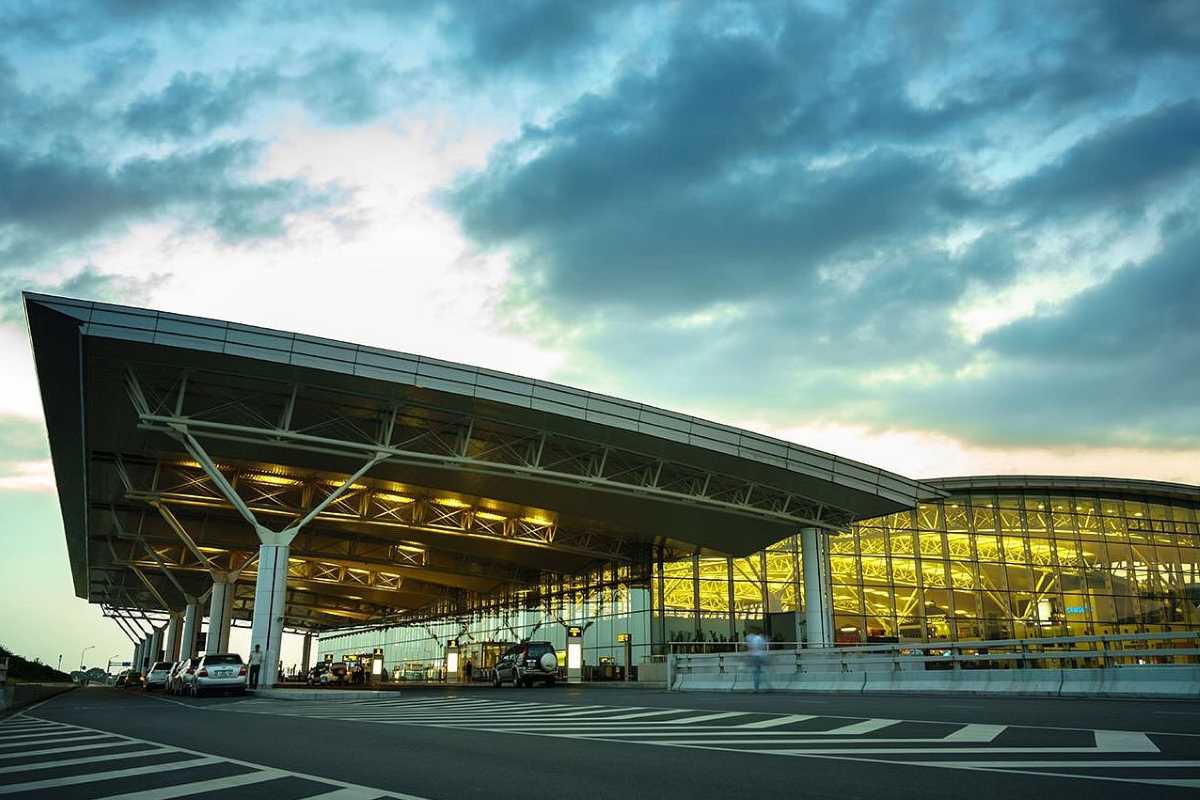
Airport Hotels for Transit Passengers
For travelers with layovers at Noi Bai International Airport, convenient accommodation options nearby provide a restful break during transit. Several on-site and close-proximity hotels offer comfortable rooms, easy airport access, and essential amenities such as free shuttle services, Wi-Fi, and 24-hour front desks. Booking information is usually available online or through travel agencies, making it simple to secure a room that fits your schedule and budget. Choosing a nearby hotel allows you to rest, freshen up, and prepare for your next flight without the stress of long transfers.
Consider staying at one of the airport hotels near Noi Bai Airport to make your layover more comfortable and hassle-free.
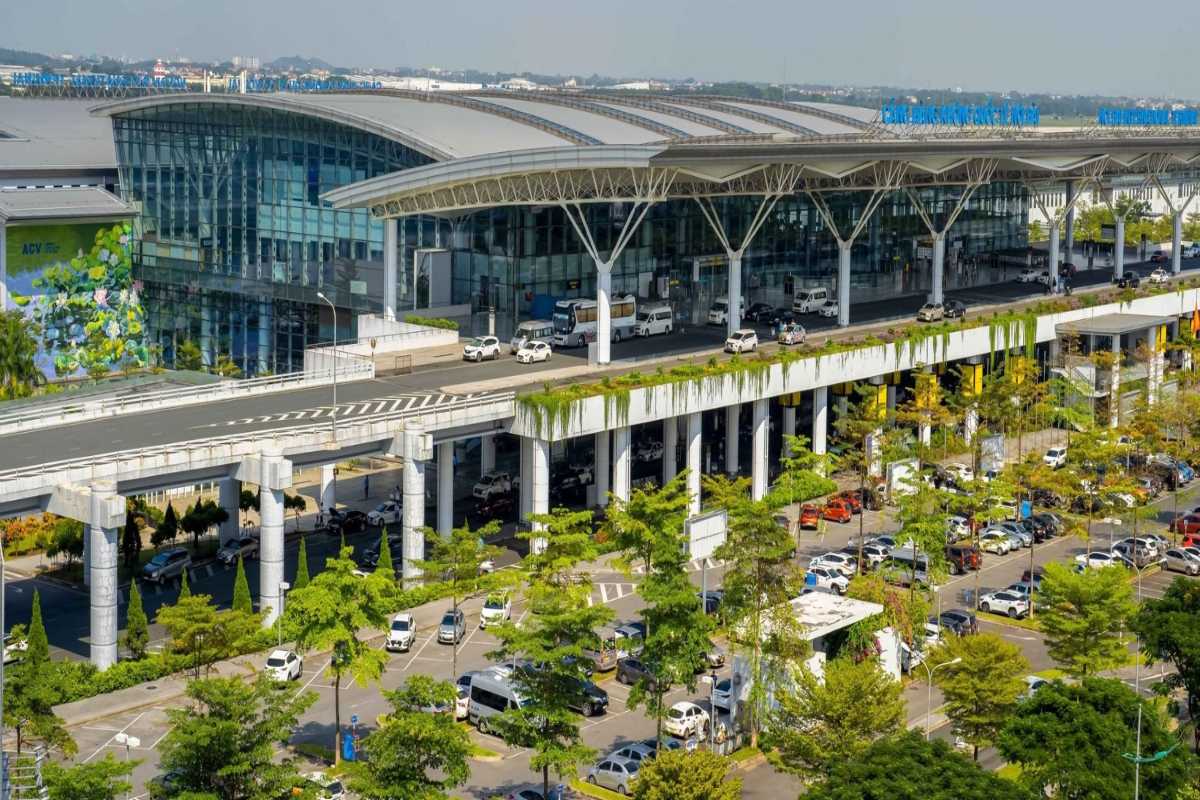
Trouble at Noi Bai? Solving Common Airport Issues
Traveling through Noi Bai International Airport can come with unexpected challenges such as lost belongings, flight delays, medical emergencies, and scams. Being prepared with the right information helps you handle these situations calmly and efficiently. This section offers practical advice and solutions for common airport problems, empowering you to resolve issues quickly and keep your journey on track.
Use these tips to navigate difficulties confidently and ensure a smoother travel experience at Noi Bai International Airport.
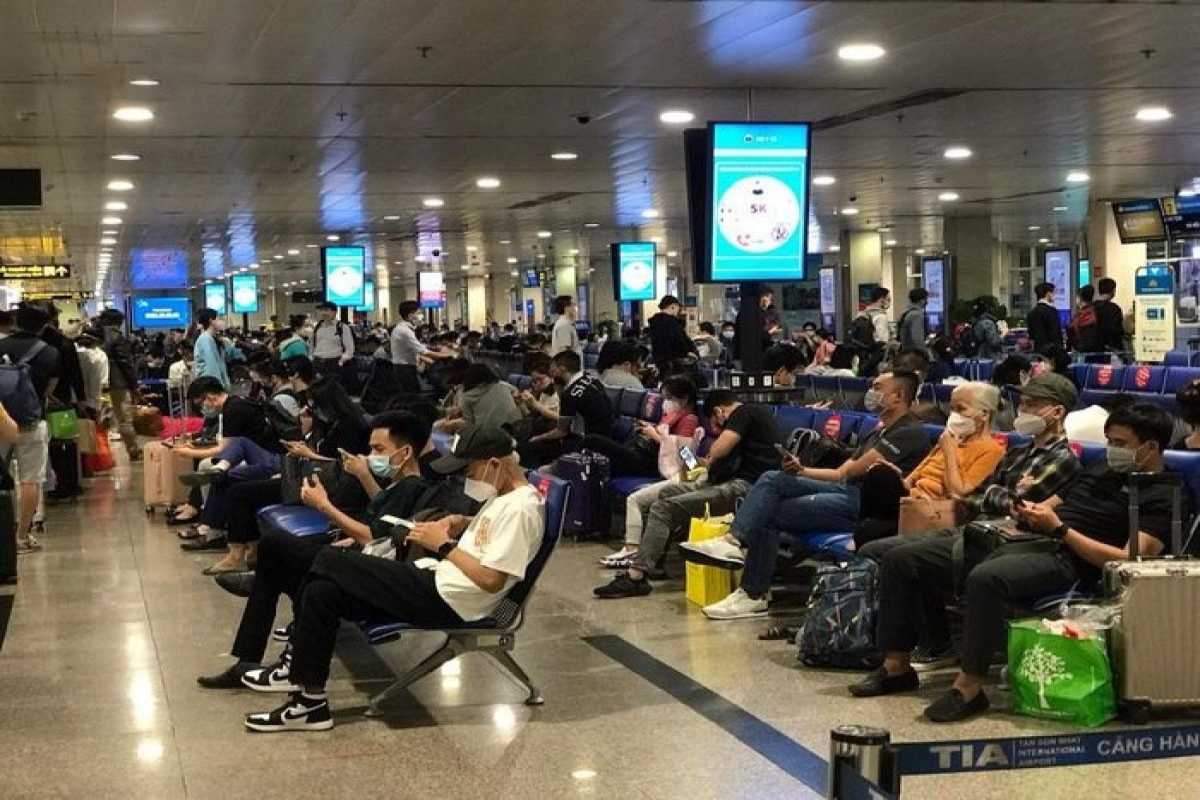
Lost & Found: What to Do If You Leave Something Behind
If you misplace items at Noi Bai International Airport, contact the lost and found office promptly. They maintain a system to track and return lost belongings. Reporting your lost property includes providing detailed descriptions and contact information. Airlines also have specific procedures for lost luggage; contacting them directly can speed recovery. Following up consistently increases your chances of retrieving your items.
Knowing how to navigate lost and found services helps you recover belongings with minimal stress.

Flight Delays & Cancellations: Your Rights & Next Steps
Flight disruptions at Noi Bai International Airport can be frustrating, but understanding your passenger rights is crucial. Airlines are obliged to provide information on delays, rebooking options, and may offer accommodations or meal vouchers during extended waits. Communicating clearly and politely with airline staff helps in securing assistance. Keeping important documents and receipts is essential for claims.
Being informed about your rights helps you manage delays effectively and access necessary support.
Sophie's Unexpected Delay: Turning a Setback into an Opportunity
The electronic board flickered, and the flight status changed from "On Time" to "Delayed: 2 Hours." A collective groan rippled through the gate area at Noi Bai International Airport. My heart sank for a moment. After a fantastic two weeks exploring Vietnam, I was looking forward to an uneventful journey home. Two hours might not seem like much, but when you're confined to an airport, it can feel like an eternity.
My initial instinct was frustration, but I quickly pivoted. What good would that do? Instead, I took a deep breath and reminded myself: this is a chance, not a burden. My immediate action plan kicked in.
First, information gathering. I walked calmly to the nearest airline service desk, even though a small queue was forming. While waiting, I pulled out my phone, connected to the free Wi-Fi Noi Bai Airport offers (it's surprisingly reliable!), and checked the airline's app and social media for updates. Knowing what to expect, even if it's bad news, beats anxious uncertainty. The agent confirmed the delay was due to a technical issue, which meant it was within the airline's control, and offered a meal voucher – a small but welcome perk.
Next, finding comfort. My initial plan was to just sit at the gate. But two hours? That's lounge time. I knew from previous research that Noi Bai International Airport has several lounges. I checked my credit card benefits (many premium travel cards offer lounge access like Priority Pass or complimentary access to specific lounges) and, sure enough, I had access to the ACV Business Lounge in Terminal 2, which I knew from a brief glance earlier was near Gate 28. Even if I hadn't had complimentary access, I'd have considered paying for a day pass (they're usually around $30-40 USD), especially for a delay of this length.
Stepping into the lounge was like entering a different dimension. The bright, bustling terminal faded into a calm, spacious environment. The subtle aroma of freshly brewed coffee and a quiet hum of conversation replaced the loudspeaker announcements. I found a plush armchair by a window overlooking the tarmac, where I could watch the planes – a strangely meditative activity.
My voucher covered a light meal, and the lounge buffet did not disappoint. I enjoyed some fresh spring rolls and a bowl of delicious, steaming pho (a delightful, unexpected last taste of Vietnam!), along with a proper cup of coffee. The Noi Bai Airport lounges also offer clean shower facilities, which are a godsend if you've been traveling for a while or have a long journey ahead. I didn't need one this time, but it's a fantastic option for longer delays.
With a full stomach and a comfortable seat, I turned my attention to being productive. The high-speed Wi-Fi allowed me to catch up on some work emails, upload photos from my trip, and even download a new audiobook. There were plenty of charging stations, so my phone and tablet were fully juiced up for the flight. I saw other travelers using the business workstations, some napping on the more reclined chairs, others simply enjoying the quiet.
The delay, instead of being a tedious wait, transformed into an unexpected opportunity for relaxation and productivity. I left the lounge feeling refreshed and ready for my flight, rather than drained and frustrated. My experience taught me that even unexpected travel disruptions can be managed positively with a little proactive thinking and by utilizing the resources available at the airport.
Sophie's Silver Linings Strategy for Delays at Noi Bai:
- Stay Informed, Proactively: Don't wait for announcements. Check your airline's app, website, and even social media for the latest updates. Approach airline staff calmly for information and any assistance (like meal vouchers).
- Know Your Airport Amenities: Before you even leave home, familiarize yourself with the airport's facilities, especially lounges. Consider if lounge access (via credit card, loyalty program, or paid pass) is worth it for longer layovers or potential delays.
- Seek Comfort & Relaxation: If you have lounge access, use it! If not, look for quiet zones, comfortable seating, or even the pay-per-use sleep pods at Noi Bai. Avoid sitting right at the gate if possible.
- Stay Charged & Connected: Utilize the free Wi-Fi and ample charging stations throughout Noi Bai International Airport. This allows you to communicate, stay entertained, or be productive.
- Hydrate & Fuel Up: Take advantage of any meal vouchers, or purchase food and drinks. Staying hydrated and well-fed helps maintain a positive mindset.
- Shift Your Mindset: View the delay not as lost time, but as an unexpected bonus – a chance to relax, catch up on tasks, or simply observe your surroundings. Resilience in travel comes from adapting.
Turning an unexpected Noi Bai delay into a serene "lounge oasis" was a game-changer for me. It empowered me to cope positively with disruptions and reinforced the idea that every part of the journey, even the unexpected pauses, can be an opportunity.

Health & Medical Services at the Airport
Noi Bai International Airport is equipped with medical clinics, first aid stations, and pharmacies to assist travelers experiencing health issues. Emergency medical assistance is available around the clock, with trained staff ready to provide care or coordinate hospital transfers if necessary. Travelers with special health needs are advised to inform their airline or the airport in advance to arrange appropriate support. Knowing the locations and availability of medical services offers peace of mind and ensures safety during your journey.
Feel confident knowing medical help is accessible throughout your time at Noi Bai International Airport.

Dealing with Scams & Tourist Traps (Especially Taxis)
Travelers at Noi Bai International Airport should remain vigilant against common scams, particularly from unofficial taxi operators. Legitimate taxi companies like Mai Linh and Vinasun operate official stands with fixed meters. Using trusted ride-hailing apps such as Grab offers safer, transparent fare options. Always verify your driver and vehicle details before starting your ride. In case of scams or unfair treatment, report incidents to airport authorities or customer service promptly to protect yourself and other travelers.
Stay informed and cautious to avoid scams and enjoy safe transportation from the airport.
Mark's Taxi Tale: How He Avoided a Common Noi Bai Scam
The thrill of landing at Noi Bai International Airport was palpable. Vietnam! I was ready for the sights, sounds, and most importantly, the food of Hanoi. But a seasoned traveler knows that airports, while gateways to adventure, can also be a playground for less scrupulous individuals. My guard was up, and it was put to the test almost immediately with a classic taxi tale.
After a smooth customs clearance, I found myself in the bustling arrivals hall of Terminal 2. The air was a mix of excitement and the low hum of a thousand conversations. I bypassed the eager individuals holding up signs with names that weren't mine, and headed towards the designated taxi areas. My plan was simple: either find an official taxi stand or use Grab.
As I approached the exit, a man, seemingly official, dressed in what looked like a uniform (though slightly ill-fitting), approached me directly. "Taxi, sir? Good price to Old Quarter!" he said, gesturing vaguely towards a car parked slightly apart from the main queue. His smile was a little too wide, and his eyes had a quick, assessing glint.
Red Flag #1: He approached me directly inside the terminal. Official taxis wait at designated stands outside, and their drivers don't usually solicit passengers so aggressively indoors.
I politely, but firmly, said, "No, thank you, I will use official taxi." I continued walking towards the clearly marked "Taxi" signs outside the terminal. He persisted, following me for a few steps, lowering his voice, "Special price, no meter, best for you!"
Red Flag #2: "No meter." This is the oldest trick in the book. A legitimate taxi in a city like Hanoi will almost always use a meter, or at least have a transparent, fixed airport fare clearly advertised. "Special price" often means a vastly inflated price.
I kept walking, scanning the official taxi lanes. I knew the reputable companies: Mai Linh (bright green cars) and Vinasun (white cars with red and green accents). They have clear company logos, phone numbers on the side, and often drivers in proper uniforms. The drivers also generally stay with their cars in the queue, not roaming the arrivals hall.
I finally reached the designated taxi queue. There was a helpful attendant organizing the line, directing people to the next available, legitimate taxi. I watched as a bright green Mai Linh taxi pulled up. The driver wore a proper uniform, and the company logo was clearly displayed. As I got in, I immediately looked for the meter, which was visible and reset to zero. "Old Quarter," I confirmed, and he nodded, starting the meter.
The ride was exactly what it should be: efficient, metered, and uneventful. The driver navigated the Hanoi traffic expertly, and I could relax, finally soaking in the sights of the city. We arrived at my hotel in the Old Quarter, and the meter read a perfectly reasonable 270,000 VND (around $11 USD) – exactly within the expected range I'd researched. I paid him, added a small tip for the fair service, and stepped out, feeling a profound sense of relief and satisfaction.
My Noi Bai taxi experience started with a slight test, but ended with confidence. Knowing the common scams and trusting official channels saved me money and, more importantly, a potential headache at the very start of my trip.
Mark's Master Tips for Avoiding Taxi Scams at Noi Bai:
- Ignore Interior Solicitations: Legitimate taxi drivers and private transfer representatives will wait at designated areas outside the arrivals hall, often holding a sign with your name if pre-booked. Ignore anyone who approaches you inside the terminal offering a ride.
- Head to Official Taxi Stands: Follow the "Taxi" signs outside the terminal. Look for clearly marked, organized queues for reputable companies like Mai Linh (green taxis) or Vinasun (white with colored accents).
- Look for Clear Branding: Official taxis will have prominent company logos, phone numbers, and license plates clearly displayed on the vehicle.
- Insist on the Meter (or Agreed Fixed Price): If taking a metered taxi, ensure the meter is reset to zero when you start. If offered a fixed price (often common for airport-to-city routes by reputable companies), confirm it before getting in and ensure it's reasonable (around 250,000-350,000 VND to the Old Quarter).
- Consider Ride-Hailing Apps: Grab (or other local apps like Be, Gojek) is an excellent, transparent alternative. You get an upfront fare, track your driver, and can pay cashless. Just ensure you're picked up at the designated Grab spot (often at specific pillars outside the terminal) and verify the car and plate.
- Stay Calm but Firm: If approached by an unofficial driver, a polite but firm "No, thank you" and continuing to walk towards the official stands is usually enough. Don't engage in a long conversation.
My Noi Bai Airport experience started with a small challenge, but successfully navigating that taxi scam attempt left me feeling confident and ready for all the genuine wonders Hanoi had to offer. A little vigilance goes a long way!

Maximizing Your Departure Experience from Noi Bai
Your time at Noi Bai International Airport before departure can be both efficient and enjoyable. From last-minute souvenir shopping to claiming tax refunds and smoothly navigating departure procedures, knowing what to expect and where to go helps you make the most of your airport experience. This section offers practical advice to ensure you leave Vietnam with great memories and no last-minute stress.
Prepare to maximize convenience and enjoy every moment before your flight.

Last-Minute Souvenirs & Gifts at Noi Bai
Within Noi Bai International Airport, shops offer a wide range of authentic Vietnamese souvenirs such as aromatic coffee, traditional silk products, local snacks, and handcrafted items. Popular brands and duty-free outlets provide quality options perfect for gifts or personal keepsakes. When selecting souvenirs, look for genuine packaging and certified sellers to ensure authenticity. Planning your purchases helps avoid rushing and ensures thoughtful, hassle-free shopping.
Find the perfect last-minute souvenirs at Noi Bai International Airport to bring a piece of Vietnam home with you.

Tax Refund Process for Tourists
Tourists departing from Noi Bai International Airport may be eligible for a VAT refund on qualifying purchases. To claim this refund, visit the VAT refund counters located in the departure area. Ensure you have your original receipts, passport, and boarding pass ready. The process involves submitting documents and may require inspection of purchased goods. Understanding the steps beforehand saves time and guarantees you receive your refund without hassle.
Navigate the tax refund process at Noi Bai International Airport confidently to recover your VAT.

International Departures: Beyond Security
After clearing security at Noi Bai International Airport, international travelers should locate their departure gates promptly. Some destinations may require additional security checks or document verification. The departure concourse offers services including duty-free shops and comfortable lounges, ideal for relaxing before boarding. Familiarizing yourself with these procedures helps avoid last-minute confusion and enhances your pre-flight comfort.
Prepare for smooth international departures at Noi Bai International Airport by knowing what to expect beyond security.

Insider Tips and Common Traveler Questions
Traveling through Noi Bai International Airport comes with questions and uncertainties. This section answers frequent traveler concerns, offering practical tips on timing your arrival, packing smartly, and managing money efficiently. Clear guidance helps you avoid common pitfalls and prepares you for a smoother journey through the airport.
Use these insider tips to travel confidently and make your airport experience stress-free.

How Early Should You Arrive for Your Flight?
For flights departing from Noi Bai International Airport, recommended arrival times vary. For international flights, aim to arrive at least 3 hours early, while domestic flights generally require 2 hours. Peak travel times, such as holidays or weekends, may need additional buffer time. If you have checked baggage, factor in extra time for drop-off. Arriving at the right time helps avoid long lines and ensures smooth check-in and security.
Plan your arrival to balance convenience and efficiency at Noi Bai International Airport.

What to Pack in Your Carry-On for Noi Bai Airport
Packing your carry-on for Noi Bai International Airport requires thoughtful essentials. Include a portable charger to keep devices powered, an empty water bottle to refill after security, important travel documents like passport and boarding pass, and comfort items such as a neck pillow or light blanket. Prepare for possible delays and Vietnam’s tropical climate by packing sunscreen and hand sanitizer. These items help ensure comfort and readiness while navigating the airport.
Pack smart with these carry-on essentials tailored for your time at Noi Bai International Airport.

Managing Currency Exchange and ATM Use
When arriving at Noi Bai International Airport, it’s important to know where to get the best currency exchange rates. Airport counters offer convenience but may charge higher fees compared to exchange services in Hanoi city. ATMs are widely available but check for foreign withdrawal fees. Using travel cards or withdrawing Vietnamese Dong in advance can save money. Understanding these options helps you access local currency efficiently and avoid unnecessary charges.
Make informed decisions about money access to get the best value during your visit.
Mia's Dong Dilemma: Navigating Currency Exchange at Noi Bai
The moment I landed at Noi Bai International Airport, two things were top of mind: finding my way to Hanoi's Old Quarter and, just as importantly, getting local currency. I'd heard conflicting advice about exchanging money at airports versus withdrawing from ATMs, and I was determined to figure out the best strategy to maximize my Vietnamese Dong (VND) for my trip. This was my Dong Dilemma.
Stepping out of the plane, the air of the terminal felt crisp, a brief respite from Vietnam's famous humidity. After clearing immigration, I saw them immediately: a cluster of bright, inviting currency exchange counters, side-by-side with rows of ATMs, all conveniently located in the arrivals hall of Terminal 2. The sheer convenience was tempting.
My first thought was to hit an exchange counter. I approached one, eyeing the rates displayed on the digital board. They seemed okay, but from my pre-trip research, I knew airport exchange rates are generally less favorable than those found in the city center. I had a crisp stack of US dollars, and I watched as the attendant quickly calculated the exchange. The service was fast, efficient, and they accepted various major currencies. For someone who just needed a small amount to get a taxi or bus and felt uncomfortable with ATMs, this would be a perfectly fine, albeit slightly less optimal, choice.
However, I remembered the advice from fellow travelers: for the best rates, ATMs are usually the way to go, even with potential fees. I decided to compare. I looked for ATMs from major Vietnamese banks like Vietinbank, BIDV, or Techcombank, which were plentiful.
I inserted my debit card into a Techcombank ATM. The screen quickly prompted me for my withdrawal amount. Here's where the next part of the "dilemma" came in: fees. Most Vietnamese ATMs charge a local fee per transaction (typically ranging from 30,000 VND to 55,000 VND, which is roughly $1.20 to $2.20 USD as of mid-2025). On top of that, my home bank charges a foreign transaction fee. So, the key was to minimize both.
My strategy: I opted to withdraw the maximum allowed amount in one go – usually 3,000,000 VND or 5,000,000 VND, depending on the bank. This way, I'd pay that fixed ATM fee only once, rather than multiple times for smaller withdrawals. Crucially, when the ATM asked if I wanted to proceed with the conversion rate offered by their bank or my home bank's rate, I always chose my home bank's rate (sometimes phrased as "without conversion" or "decline conversion"). This avoids something called "Dynamic Currency Conversion (DCC)," where the local ATM or merchant applies an unfavorable exchange rate.
Within moments, the ATM whirred, and out came a thick stack of colorful Vietnamese Dong notes. The texture of the polymer notes felt smooth and slightly sticky – a common characteristic that makes them notoriously tricky to count at first. I carefully counted the cash, ensuring the correct amount, and then stored it securely.
Comparing the effective rate I got from the ATM (even with the fee) versus the airport exchange counter, the ATM was definitely the winner, giving me more VND for my USD. For immediate needs like a taxi or bus ticket, having a small amount of cash is essential.
My Dong dilemma at Noi Bai Airport was resolved by choosing the ATM. It was efficient, offered a better rate, and gave me enough local currency to kickstart my Hanoi adventure without worrying about finding another exchange spot immediately.
Mia's Money-Saving Tips for Noi Bai Airport (and beyond):
- Don't Exchange Too Much at the Airport: Airport exchange counters often have less favorable rates than banks or gold shops in the city. Exchange a small amount (enough for immediate transport, maybe 500,000 VND to 1,000,000 VND) if you prefer cash over ATMs for your first few hours.
- ATMs for Best Rates: Generally, ATMs offer better exchange rates than airport currency counters. They are widely available at Noi Bai International Airport in both terminals.
- Know Your Bank's Fees: Check with your home bank about foreign transaction fees and international ATM withdrawal fees before you travel. Some banks offer accounts with no international fees – a true money-saver!
- Withdraw Larger Sums: To minimize fixed ATM fees, withdraw the maximum amount allowed per transaction (often 3,000,000 VND to 5,000,000 VND or even 10,000,000 VND depending on the ATM/bank).
- Decline Dynamic Currency Conversion (DCC): If an ATM asks if you want to be charged in your home currency (USD, EUR, etc.) or Vietnamese Dong (VND), always choose VND. This ensures your home bank (which usually offers a better rate) handles the conversion, not the local ATM operator.
- Check Notes Carefully: Vietnamese Dong notes can stick together, especially the new polymer ones. Always count your cash twice, both when receiving it from the ATM/exchange and when paying merchants.
- Inform Your Bank: Let your home bank know about your travel plans to avoid your card being flagged for suspicious activity and blocked.
Navigating currency exchange at Noi Bai effectively meant more Dong in my pocket for delicious street food and fascinating souvenirs, proving that a little planning goes a long way in managing your travel budget.

Exploring Beyond the Airport
If you have time before or after your flight at Noi Bai International Airport, exploring nearby accommodations and local attractions can enrich your travel experience. From comfortable hotels suitable for various budgets to quick day trips showcasing Vietnam’s culture and history, there are plenty of options to consider. Planning your stay and activities around local festivals and cultural highlights offers a meaningful way to connect with the region beyond the airport.
Discover convenient lodging and exciting excursions near Noi Bai International Airport to make the most of your trip.

Where to Stay Near Noi Bai Airport
Choosing the right hotel near Noi Bai International Airport can simplify your travel plans, especially for early departures or late arrivals. Popular options include VATC SleepPod, ideal for short stays; New Airport Hotel, offering mid-range comfort; and Chio Hotel and Apartment, which provides longer-term lodging with apartment-style amenities. These hotels vary in price and facilities but share easy access to the airport, ensuring you won’t worry about long transfers.
Select a nearby hotel that matches your budget and schedule for a stress-free stay near Noi Bai International Airport.
Recommended Hotels and Guesthouses for Different Budgets
Here are some lodging choices to consider based on your budget:
- Budget Options: VATC SleepPod – Compact pods with essential amenities, perfect for short naps or overnight stays near the airport.
- Mid-Range Hotels: New Airport Hotel – Comfortable rooms with additional services such as shuttle transport and breakfast included.
- Luxury Stays: Chio Hotel and Apartment – Spacious apartments with modern furnishings, ideal for longer stays or family groups.
Each option offers convenient access to the airport and varying levels of comfort to suit your needs.
No matter your budget, there is a suitable accommodation near Noi Bai International Airport to ensure a restful and convenient visit.

Quick Day Trips and Cultural Experiences Nearby
When your schedule allows, taking short excursions from Noi Bai International Airport can add depth and enjoyment to your trip. Visiting nearby cultural sites like Bat Trang Ceramic Village or exploring the vibrant streets of Hanoi’s Old Quarter offers a chance to connect with Vietnam’s heritage and local life. These experiences fit well into limited timeframes and help you make the most of your visit beyond the airport.
Maximize your travel by adding quick, enriching cultural stops near Noi Bai International Airport.
Visiting Bat Trang Ceramic Village
Located a short taxi or bus ride from Noi Bai International Airport, Bat Trang Ceramic Village is famous for its centuries-old pottery traditions. Visitors can watch skilled artisans at work, participate in pottery workshops, and shop for unique ceramic souvenirs. A typical visit takes about half a day, making it an ideal cultural excursion for travelers with limited time.
Plan your trip to Bat Trang Ceramic Village to experience authentic Vietnamese craftsmanship close to the airport.
Exploring Hanoi’s Old Quarter After Your Flight
If you have a brief layover or extra time, a quick visit to Hanoi’s Old Quarter offers a taste of the city’s lively atmosphere. Efficient transport options from Noi Bai International Airport include taxis or shuttle services. Must-see spots include Hoan Kiem Lake and famous street food streets known for dishes like Pho and Banh Mi. Effective time management ensures you enjoy highlights without missing your next flight.
Use these tips to enjoy a fulfilling quick tour of Hanoi’s Old Quarter during your stay near Noi Bai International Airport.

Seasonal Events and Festivals You Can Experience
Traveling through Noi Bai International Airport offers more than just a gateway to Vietnam—it’s an opportunity to experience the country’s rich cultural festivals. From the vibrant Lunar New Year (Tet) celebrations to the spiritually significant Perfume Pagoda Festival and lively Giong Festival, these events showcase Vietnam’s heritage and community spirit. Knowing when these festivals occur helps you plan your trip to coincide with unforgettable local experiences.
Align your travel dates with Hanoi’s cultural festivals to deepen your visit beyond the usual sights near Noi Bai International Airport.
Lunar New Year (Tet) Celebrations Around Hanoi
Tet, Vietnam’s Lunar New Year, is the most important festival, marked by family gatherings, traditional foods, and public celebrations. During this peak period, Noi Bai International Airport sees increased traffic and changes in service schedules. Travelers should plan ahead, expect busy conditions, and embrace the festive atmosphere. Tips include booking flights early, arriving extra early at the airport, and enjoying local Tet customs for a meaningful cultural experience.
Prepare for your visit during Tet with these practical travel tips and cultural insights near Noi Bai International Airport.
Other Local Festivals Worth Timing Your Trip For
Beyond Tet, festivals like the Perfume Pagoda Festival offer spiritual journeys to scenic temples, while the Giong Festival celebrates legendary heroes with vibrant performances and rituals. These festivals occur throughout the year and provide travelers with unique opportunities to witness authentic Vietnamese traditions. Planning your trip around these events adds depth and cultural richness to your itinerary near Noi Bai International Airport.
Consider timing your travel to coincide with these special festivals for an enriched Vietnamese experience.

Why You’ll Love Traveling Through Noi Bai International Airport
Traveling through Noi Bai International Airport offers a blend of modern efficiency and authentic Vietnamese touches that set it apart in Southeast Asia. Its expanding network connects you conveniently to destinations worldwide, while the thoughtfully designed facilities ensure a smooth journey. With friendly staff and growing amenities, the airport makes your arrival and departure more comfortable and enjoyable. Embrace these benefits and get ready to explore Vietnam with confidence and ease.
Experience the difference at Noi Bai International Airport and discover why it’s a favorite among travelers in the region.

What Makes This Airport Unique Among Southeast Asian Airports
Noi Bai International Airport stands out for its combination of efficiency, modern architecture, and expanding international connectivity. Terminal 2, in particular, reflects Vietnam’s growth with sleek design and state-of-the-art facilities. Subtle cultural elements, such as traditional artwork and friendly service, enrich the travel experience, making the airport more than just a transit point. These qualities make it a preferred choice compared to other airports in Southeast Asia.
Discover why travelers consistently rate Noi Bai International Airport highly among regional hubs.

Tips from Fellow Travelers to Help You Navigate Like a Pro
Seasoned travelers share practical advice for making your time at Noi Bai International Airport smoother. From knowing the best lounges to use, to navigating immigration lines efficiently, these pro tips help you avoid common hassles. Understanding transport options and how to stay connected ensures a stress-free experience. Applying these insights will save you time and enhance your overall journey.
Use these pro tips for Noi Bai International Airport to travel smarter and more comfortably.

Share Your Experience and Connect with Other Asia Travel Links Visitors
Join the community of travelers who share their stories and questions about Noi Bai International Airport on Asia Travel Links. Your experiences can help others prepare better and discover new tips. Engage with fellow explorers, exchange advice, and stay inspired for your next journey. Being part of this network offers ongoing support and enriches your travel adventures.
Connect and share your Noi Bai International Airport travel experiences with the Asia Travel Links community today.
Mike Nguyen
Travel Advisor
Mobile: +84917506881 (whatsapp available)
Email: contact@asiatravellinks.com
Faqs
Noi Bai International Airport is the main gateway serving Hanoi and northern Vietnam. It functions as a major international and domestic hub with two terminals: Terminal 1 for domestic flights and Terminal 2 for international travel. The airport features modern facilities, efficient services, and growing connectivity, welcoming millions of travelers each year.
- Located about 45 kilometers from central Hanoi
- Two terminals handling domestic and international flights separately
- Home base for Vietnam Airlines and several other carriers
- Offers a range of amenities including lounges, duty-free shops, and dining options
- Known for its continuous upgrades to accommodate increasing passenger traffic
Travelers can expect a blend of contemporary infrastructure and Vietnamese hospitality at Noi Bai International Airport, setting a welcoming tone for their journey. Plan your visit knowing the airport serves as a critical hub for flights across Asia and beyond.
Travelers have several transport options from Noi Bai International Airport to Hanoi city center, including public buses, taxis, ride-hailing apps, and private transfers. The journey typically takes 30 to 60 minutes depending on traffic and your destination within the city.
- Public buses such as Bus 86 Express run regularly between the airport and the Old Quarter
- Official taxis from companies like Mai Linh and Vinasun provide metered rides
- Ride-hailing apps like Grab offer convenient, cashless payment and fare estimates
- Private shuttle services and pre-booked transfers offer comfort and fixed prices
Choosing your transportation depends on your budget, luggage, and time constraints. Public buses offer affordability, while taxis and private transfers prioritize convenience. Early planning helps ensure a smooth arrival or departure.
At Noi Bai International Airport, travelers must comply with Vietnam's visa policies, which include e-visas, visas on arrival, and visa exemptions for certain nationalities. Proper documentation is essential to avoid delays during immigration.
- E-visa applications can be completed online prior to arrival
- Visa on arrival requires a pre-approval letter obtained through an authorized agency
- Nationals of specific countries may enter visa-free for limited durations
- Always check the latest regulations on official government websites before travel
Proper preparation ensures swift immigration processing at Noi Bai International Airport. Keep your passport, visa documents, and any additional paperwork handy to avoid complications upon arrival.
Noi Bai International Airport offers several lounges, including the Vietnam Airlines Lounge and the NIA Business Lounge, providing travelers with comfortable spaces to relax before flights. Access may be granted via business class tickets, frequent flyer status, or priority pass memberships.
- Lounges offer amenities like complimentary food and beverages, Wi-Fi, and comfortable seating
- Shower facilities and quiet work areas are available in some lounges
- Access may be purchased at the door or included with certain credit cards or airline programs
- Locations are within Terminal 2 for international passengers, with some options in Terminal 1
Using airport lounges enhances your pre-flight comfort, allowing you to unwind or work in a quieter, more convenient environment within Noi Bai International Airport.


